Casa Rosada Tour: Take a Stroll through Argentina’s Government House
Sitting at the edge of Plaza de Mayo , the Casa Rosada is one of the most iconic buildings in Buenos Aires.

With its pink façade and palace-like design, the governmental house has served as the backdrop to countless numbers of protests, famous speeches and significant moments in Argentina’s history.
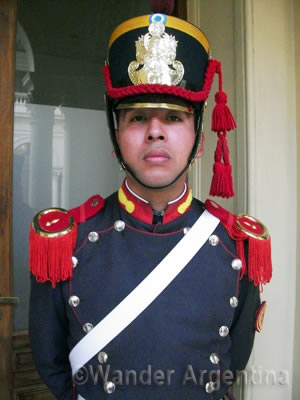

Free Tours of the Casa Rosada
Guarded by police and tall gates often flanked with protest signs, the Pink House appears to be an impenetrable castle.
But every weekend, the mysterious palace doors open to the public for free hour-long tours.
The entrance for the tour is at the northern backside of the building, facing Plaza de Mayo.
Once you fly past the lax security and metal detector, make sure to take a photo with the guards of honor, and perhaps try to get them to crack a smile, before getting in line for a ticket.
The Casa Rosada tour is on a first-come, first-served basis and you need the colored ticket to be placed in a tour group.
The tours are available in Spanish, English and Portuguese, although unless you are with a large group of foreigners and request a language preference beforehand, it will most likely be in Spanish. Your tour guide will probably be bilingual and can fill you in on the side though.
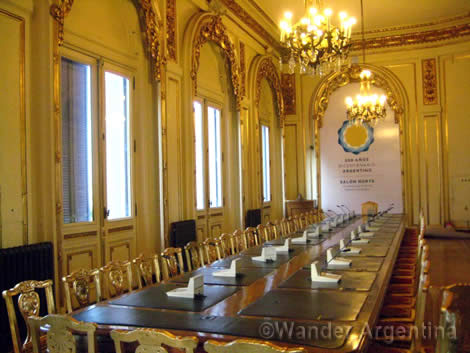
A stroll through the Casa Rosada offers visitors a peek into Argentina’s turbulent history and the wealth of the nation.
Highlights of the Casa Rosada Tour
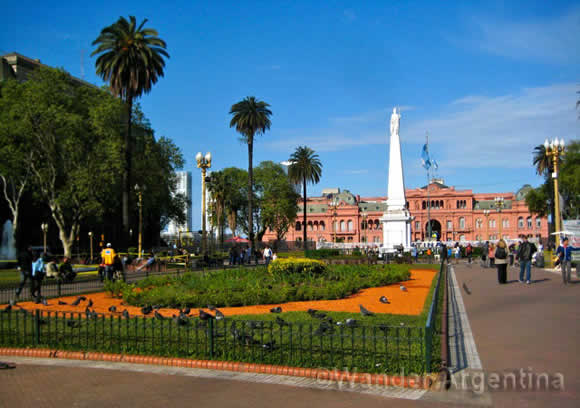
Visitors first get a glimpse of the Bicentennial Hall of Argentina Painters and Paintings, inaugurated in 2011.
From there it’s onto the rest of the palace including the Salón Blanco (White Room), where many important presidential ceremonies take place, the Martín Fierro Hall, more luxurious halls and stairs of Honor, and the beautiful stained-glass gallery.
The Bicentennial Hall for Argentine Women is flanked by photos of famous women of Argentine history and is where in 2012 the Eva Perón 100-peso bill was introduced with much fanfare. Visitors also get a peak into the President’s office, the presidential elevator with its theater-like red velvet bench and the office where Eva Perón gathered her fervor before heading out to the balcony to address the descamisados (‘shirtless ones’).
Toward the end of the tour, visitors pass over the Patio of Honor, or the Patio of the Palms, which looks as if it came out of a 19 th century Spanish film.
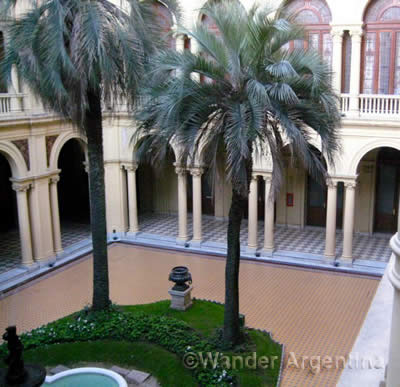
If you linger too long in any room, marveling at sparkling chandeliers or turn of the 19th century furniture, a guard or security officer will shoo you along to catch up with the group.
The presidential balcony is the highlight of the tour for many, as it’s a chance to take the stage where former presidents have given historic speeches, get a bird’s eye view of Plaza de Mayo and get a great picture to take home.
—Rachel Aretakis
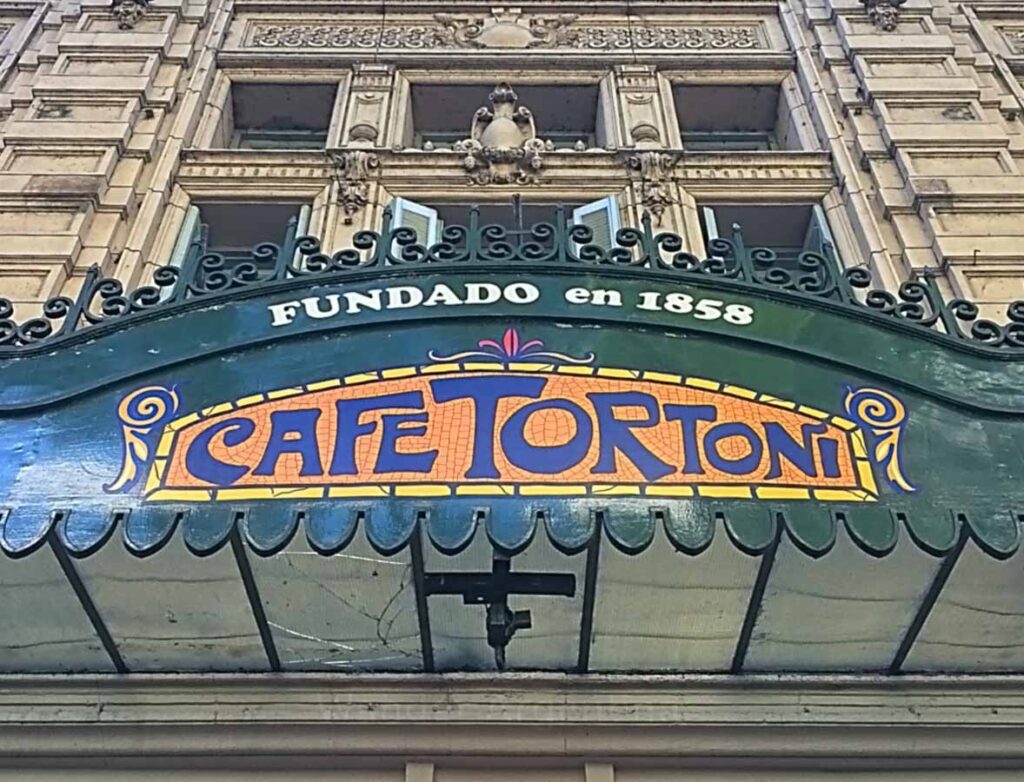
Nearby, check out the Cafe Tortoní, a historic French style café ➡
Tours of the Casa Rosada 50 Balcarce, Mirocentro Tel: 4344-3802 / 4344-3805
* Editor’s Update: Until the last change of administration in Argentina, guests could make free reservations through https://visitas.casarosada.gob.ar/ but the website isn’t working.
In the meantime, check out some other popular Buenos Aires tours .
• When operating (up in the air due to the pandemic) 10:00 a.m. until 6:00p.m., Saturdays (in Spanish) They begin every 10 to 15 minutes and last about an hour, they are now required to be booked online via the link above
• English tours are on Saturdays at 12:30 p.m. The website says you must book 15 days in advance and sometimes is full. If this is the case, you can just try to show up at the right time and you may get lucky. Make sure you have your passport. • Cost: Free! • Cameras are permitted on the tour, but no flash • ID may be requested for security reasons
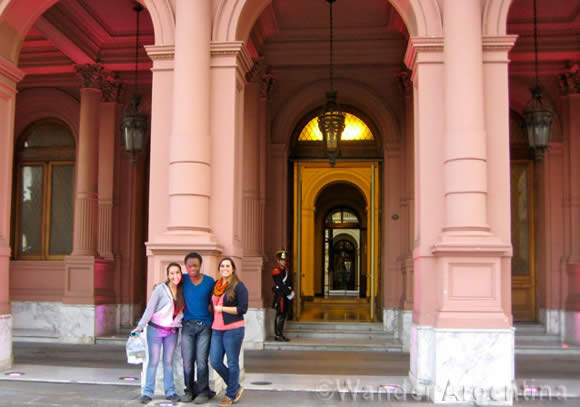
→ For even more Argentine history, visit the Casa Rosada Museum (formerly the Bicentenary Museum), on the south side of the first floor.
It offers over 200 years of governmental mementos, a look at the city’s underground tunnels and fort on top of which the Casa Rosada was constructed as well as permanent and temporary art exhibits.

Golf Lessons in Buenos Aires
Buenos Aires Downtown Tours & Day Trips
→ Check out our tour page for a curated list of Buenos Aires City Tours
→ Book a Private Half-Day Buenos Aires City Tour — A four-hour private Buenos Aires tour with a knowledgeable expat resident.
This full-service tour can be personalized to see the Buenos Aires’ highlights such as the La Boca, the Plaza de Mayo, San Telmo and Recoleta , including the Recoleta Cemetery , depending on your preference.
→ Read about Tango Shows & Activities in Buenos Aires
1 thought on “Casa Rosada Tour: Take a Stroll through Argentina’s Government House”
- Pingback: A Good Week | A Far Piece
Comments are closed.
Our Services
Privacy Policy
Airport Pickup
Attend a Soccer Game
Book Accommodation
Driving & Car Rental
©Wander Argentina 2024
All rights reserved.
As Amazon Associates, Wander Argentina earns from qualifying purchases
- South America
- 10 Things You Need To...
10 Things You Need to Know Before Visiting The Casa Rosada

The Casa Rosada, or the presidential palace, is one of the most emblematic buildings in the Argentine capital of Buenos Aires . Known for its unique pink colour, this palace has been at the focal point of much of Argentina ’s history. Here’s everything you need to know before visiting the Casa Rosada. Take a guided tour

One of the best ways to discover the secrets of the Casa Rosada is by taking a guided tour. Tours are offered in Spanish and English, are free of charge and can be reserved by visiting the website. An experienced guide will take you around the public areas of the presidential palace, and you can see the incredible architecture, patios and regal atmosphere of the house in all its glory on the inside. This is the executive mansion, not the official residence, of the president
The Casa Rosada is officially called the executive mansion of the president of Argentina, which is different to the official residence, which is the Quinta de Olivos in the upper class residential neighbourhood of Olivos, in the north of Buenos Aires just outside the capital. During Cristina Kirchner ’s term in office, it was common to see the presidential helicopter flying over the city, taking her from the Casa Rosada to the Quinta de Olivos. Only one president has actually lived in the Casa Rosada, and that was Roque Sáenz Peña, between 1910 and 1914. It is made up of lots of different buildings

Although there is a large swath of land between the Casa Rosada and the Rio de la Plata, originally the rear of the site actually went to the water’s edge. Buenos Aires is a city that turns its back on the river, and now the port regeneration development at Puerto Madero provides a buffer between the city and the river. The riverside location was why this site was chosen for the original Customs House, because all of the goods coming into the city were processed in this building. The palace’s famous colour has dubious origins

As with every good historical site, the Casa Rosada is full of legend and lore, and one of the most famous tales is about the iconic colour of the palace. One story goes that the facade was painted with cow’s blood instead of paint so that it would be resistant to Buenos Aires’ famous humidity. But it is more likely that the house was painted pink to try and diffuse political tensions at the time – the colours of opposing political parties were combined to make pink: the Federals used red, while the Unitarians used white. The Casa Rosada’s balcony has been the scene of many famous events
Eva and Juan Peron perhaps made the most use out of the Casa Rosada’s famous balcony, which overlooks the city’s main square, the Plaza de Mayo. They would address the masses in the 40’s and 50’s, and these speeches were immortalised by Madonna in the Hollywood movie Evita . More recently, Cristina Kirchner has held court from the balcony, and even new president Mauricio Macri has engaged in some dad dancing from this perch. There is a museum behind the palace
Located behind the Casa Rosada is the Casa Rosada Museum, where you can see a wealth of presidential paraphernalia from past presidents and eras of Argentina democracy. The museum stands on the site of the original fort, and tells the story of Argentina from colonial times to the present day. One of the architects of the palace also designed the Teatro Colon
Buenos Aires in the 19th was a hotbed of development, the nascent city seeing a boom in construction, with many important administrative, civic and cultural institutions being built at this time. One of the architects involved in the construction and consolidation of the Post Office, fort and presidential palace buildings was Francesco Tamburini, who was also the principal architect of Buenos Aires’ famous opera house, the Teatro Colon. A statue of Christopher Columbus was replaced at the end of the Kirchner reign

A monument to Christopher Columbus had been located at the rear of the Casa Rosada, but was replaced by Cristina Kirchner towards the end of her term with a Bolivian freedom fighter, Juana Azurduy, a gift from Bolivian president Evo Morales in 2015. The replacement of the Columbus statue with a female guerrilla from Bolivia is a statement on the past and present of Latin America. It is the site of mass protests in the capital
If ever there is a protest in the capital of Buenos Aires, the Plaza de Mayo, the city’s main square in front of the Casa Rosada, is the destination for the manifestation. This is because the public want their voice to be heard by the president, so what better way to show the authorities that they mean business than by protesting outside the presidential palace. On the ground in the Plaza de Mayo, you can see the symbols of the headscarves of the Mothers and Grandmothers of the Plaza de Mayo , and there is a permanent encampment of veterans from the Malvinas, or Falklands, War, who are in constant protest against the state.
Since you are here, we would like to share our vision for the future of travel - and the direction Culture Trip is moving in.
Culture Trip launched in 2011 with a simple yet passionate mission: to inspire people to go beyond their boundaries and experience what makes a place, its people and its culture special and meaningful — and this is still in our DNA today. We are proud that, for more than a decade, millions like you have trusted our award-winning recommendations by people who deeply understand what makes certain places and communities so special.
Increasingly we believe the world needs more meaningful, real-life connections between curious travellers keen to explore the world in a more responsible way. That is why we have intensively curated a collection of premium small-group trips as an invitation to meet and connect with new, like-minded people for once-in-a-lifetime experiences in three categories: Culture Trips, Rail Trips and Private Trips. Our Trips are suitable for both solo travelers, couples and friends who want to explore the world together.
Culture Trips are deeply immersive 5 to 16 days itineraries, that combine authentic local experiences, exciting activities and 4-5* accommodation to look forward to at the end of each day. Our Rail Trips are our most planet-friendly itineraries that invite you to take the scenic route, relax whilst getting under the skin of a destination. Our Private Trips are fully tailored itineraries, curated by our Travel Experts specifically for you, your friends or your family.
We know that many of you worry about the environmental impact of travel and are looking for ways of expanding horizons in ways that do minimal harm - and may even bring benefits. We are committed to go as far as possible in curating our trips with care for the planet. That is why all of our trips are flightless in destination, fully carbon offset - and we have ambitious plans to be net zero in the very near future.
Culture Trip Spring Sale
Save up to $1,100 on our unique small-group trips limited spots..

- Post ID: 1721164
- Sponsored? No
- View Payload
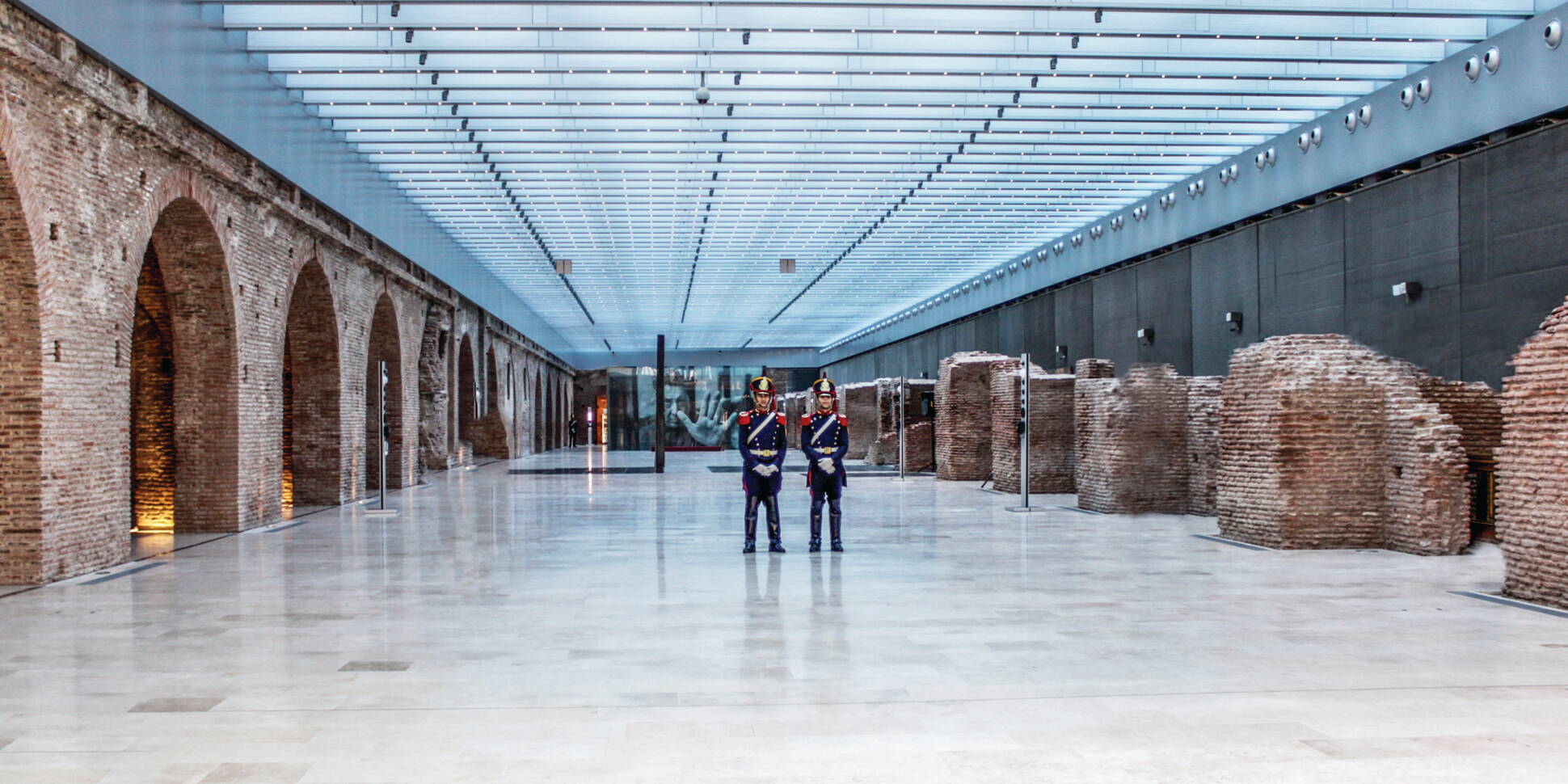
Casa Rosada Museum
- Compartilo en redes :
The Casa Rosada Museum is a public organism dependent on the General Secretariat of the Presidency of the Nation, and is an integral part of the historical complex formed by the Casa Rosada, the Plaza Colón and the Reja Federal.
Inaugurated on May 24, 2011 during the presidency of Dr. Cristina Fernández de Kirchner, its opening implied the recovery and enhancement of the Buenos Aires Fort and the Taylor Customs House. A large and luminous space of 5,000 square metres was fitted out for the proper exhibition of the cultural heritage of Argentines.
Throughout its vaulted galleries, the Casa Rosada Museum offers the public a permanent exhibition that traces the history of Argentina, from the beginning of the 19th century to the present day.
The museum has a varied collection of approximately 12,000 pieces, including documents, textiles, furniture, national and international works of art, medals and decorative arts. It also has objects that belonged to the Argentinean Presidents, referring to their governmental administrations as well as their private lives.
In the centre of the Patio de Maniobras is Ejercicio Plástico, a masterpiece of Latin American art created in 1933 by the Mexican artist David Alfaro Siqueiros, together with the Argentinians Antonio Berni, Juan Carlos Castagnino and Lino Enea Spilimbergo, and the Uruguayan Enrique Lázaro. Originally painted in the basement of a country house in the town of Don Torcuato, in the province of Buenos Aires, it was stored precariously in containers for more than 16 years until it was recovered and restored by the national government, in direct cooperation with the Mexican government.
Through the conservation, research and exhibition of historical objects, as well as its temporary exhibitions and cultural activities, the Casa Rosada Museum is a space for reflection and debate on Argentine history and its protagonists, from a federal perspective, offering visitors a novel experience.
The Casa Rosada Museum is open from Wednesdays to Sundays and on holidays, from 10.00 am to 6.00 pm (last admission at 5.30 pm).
Authorities
President of the Nation Javier Milei
Secretary General Karina Milei
Director of Cultural Programmes and Museum Casa Rosada Virginia Fernanda González
Suscribite con tu mail
Queremos estar más y mejor comunicados, conocerte y acompañarte. escribinos y contanos tus sueños, ideas e inquietudes. ¡estamos en contacto.
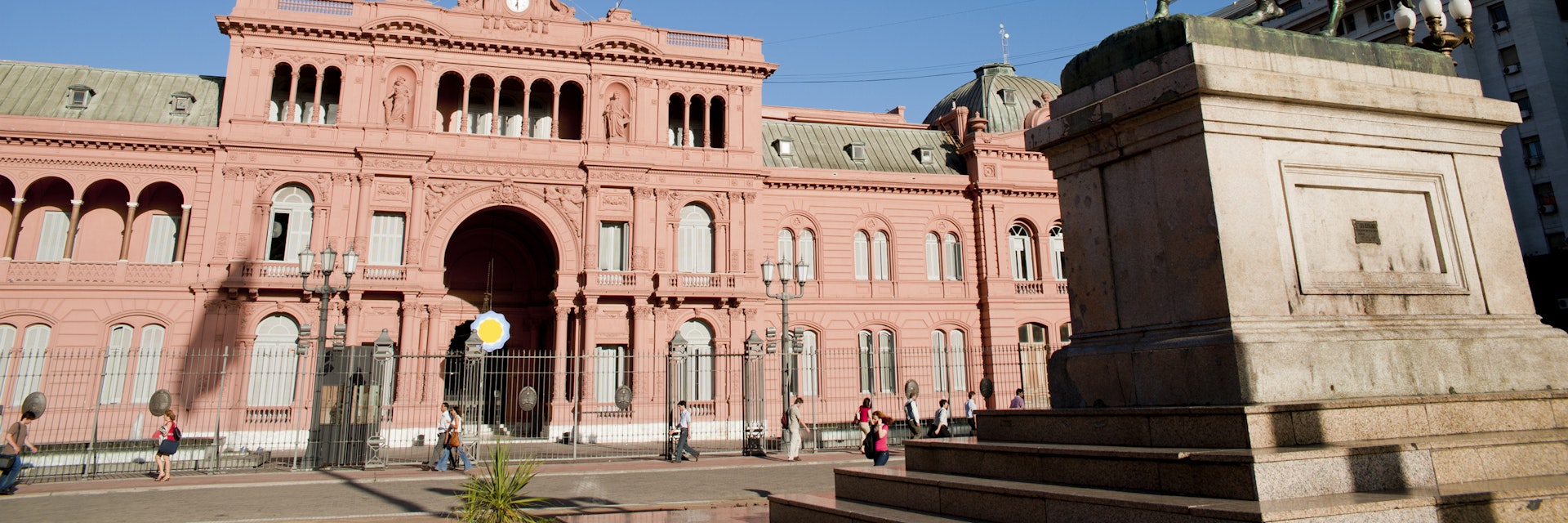
Getty Images/Axiom RM
Casa Rosada
Top choice in Buenos Aires
The Casa Rosada was named for its distinctive color. It was from the balcony here, at the presidential palace, that Eva Perón famously addressed the throngs of impassioned supporters packed into Plaza de Mayo. (Note that the building houses offices; the presidential residence is in the northern suburb of Olivos.) Free hour-long guided tours are given on weekends and must be booked online in advance; bring ID.
The building occupies the site where colonial riverbank fortifications once stood; today, however, after repeated landfills, the palace stands more than 1km inland. The interesting Museo Casa Rosada is located behind the palace.
One theory goes that the Casa Rosada's pink hue represented President Sarmiento's attempts to make peace during his 1868–74 term (by blending the red of the Federalists with the white of the Unitarians), but the more likely explanation is that it was caused by mixing white paint with bovine blood, a common practice in the late 19th century.
Plaza de Mayo
Get In Touch
011-4344-3804
https://visitas.casarosada.gob.ar
Lonely Planet's must-see attractions
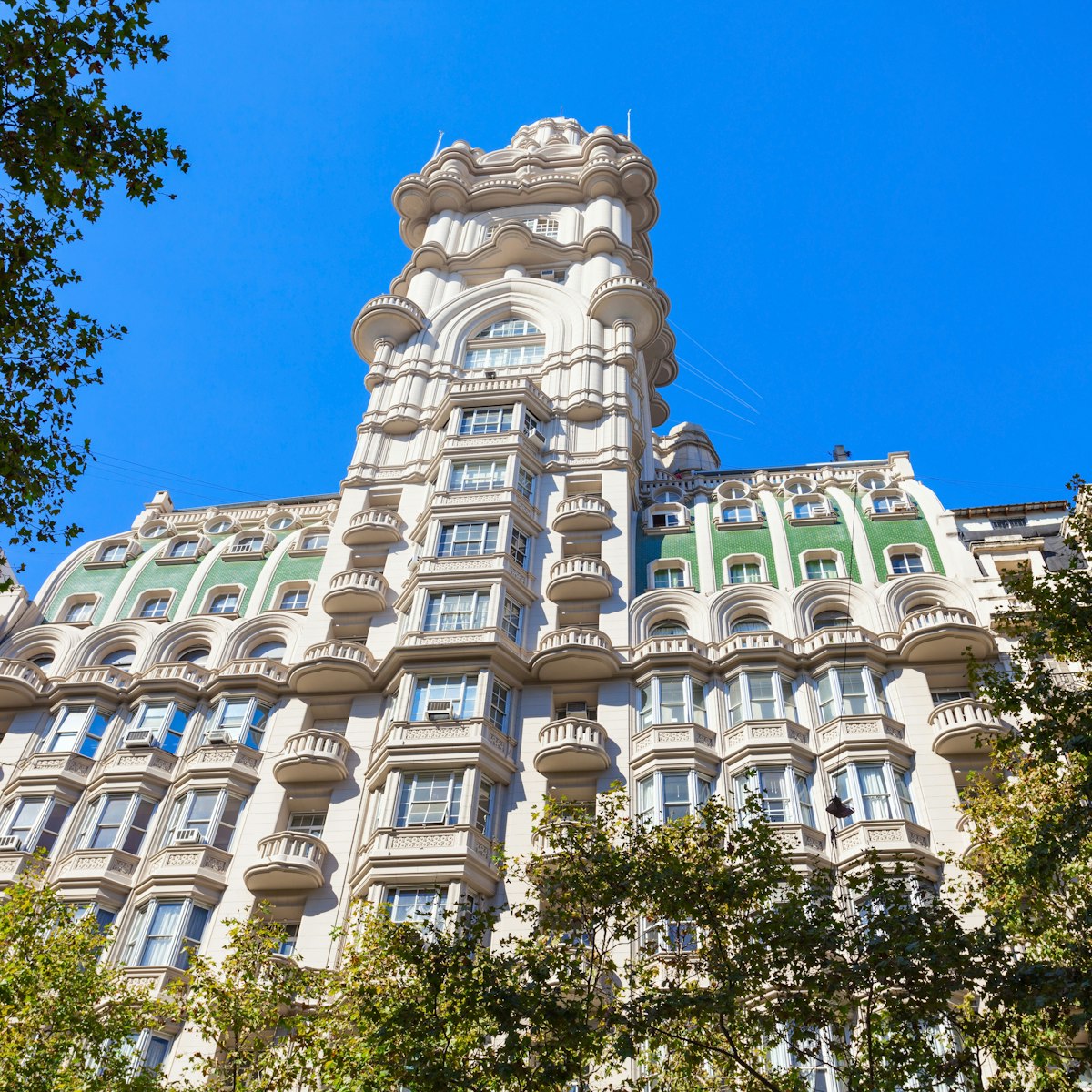
Palacio Barolo
One of Buenos Aires' most beautiful monuments, this 22-story building has a unique design inspired by Dante’s Divine Comedy. Its structure is divided into…
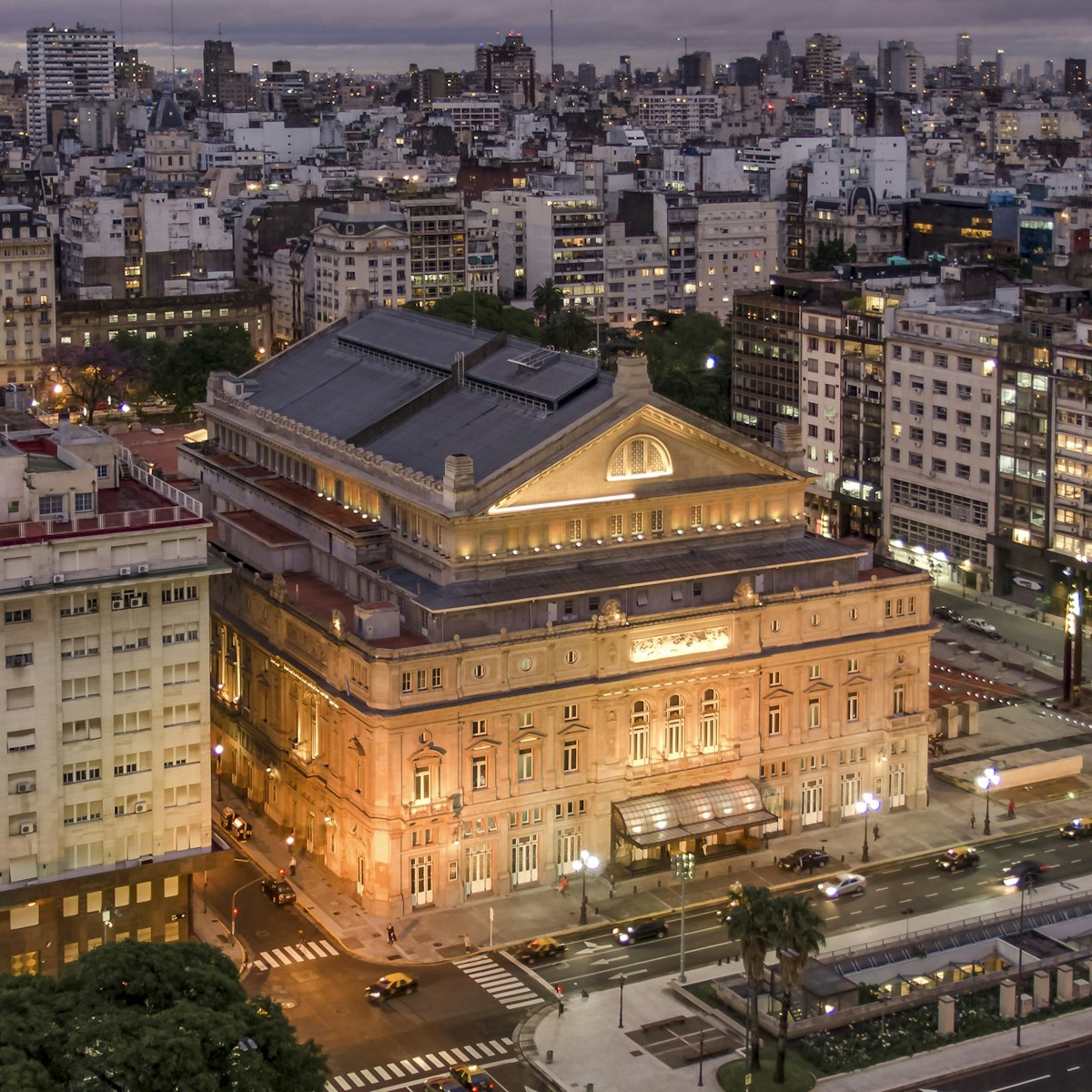
Teatro Colón
Occupying an entire city block, this impressive seven-story theater is one of BA’s most prominent landmarks. It’s the city’s main performing arts venue,…
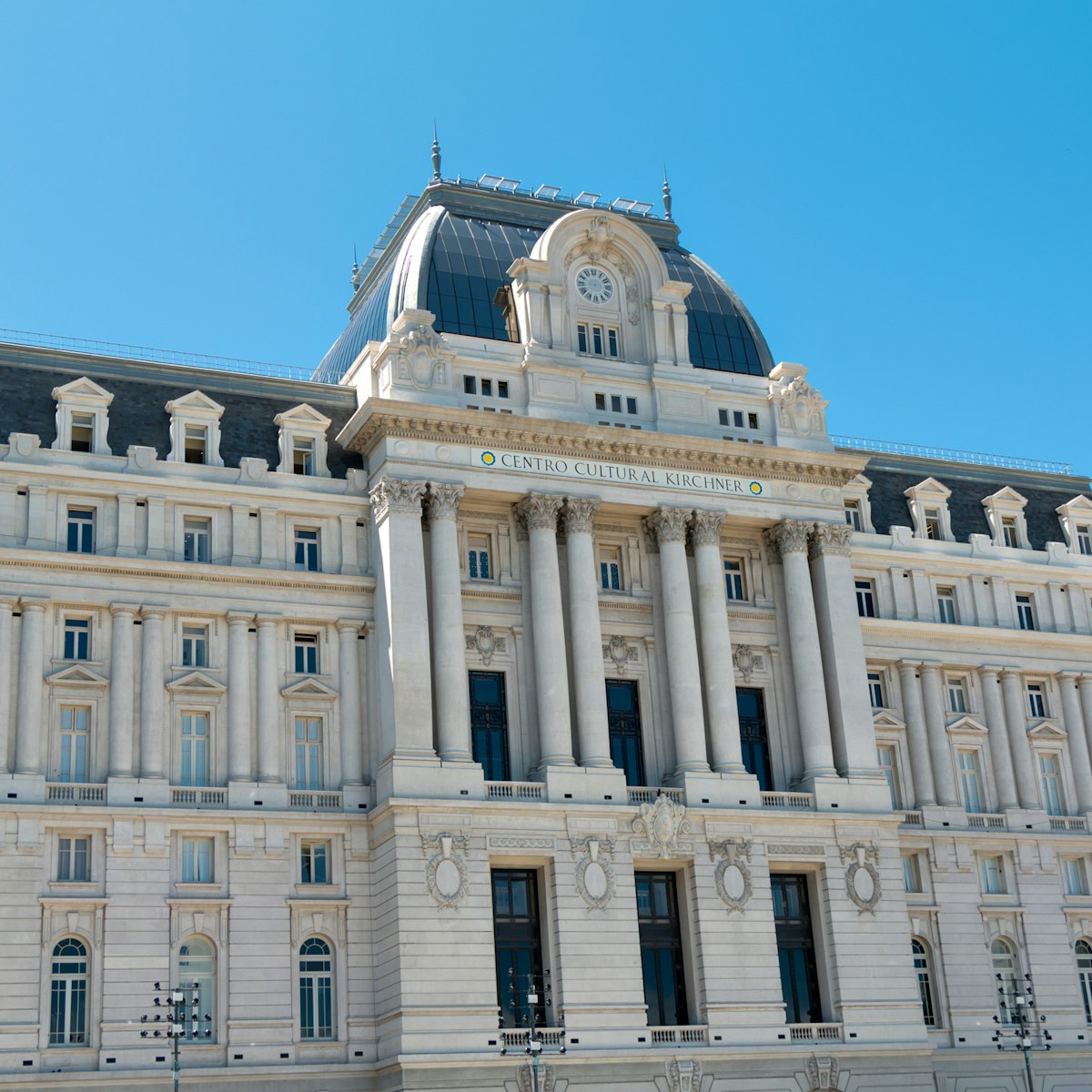
Centro Cultural Kirchner
It was former president Néstor Kirchner who, in 2005, first proposed turning the abandoned former central post office into a cultural center. He died in…
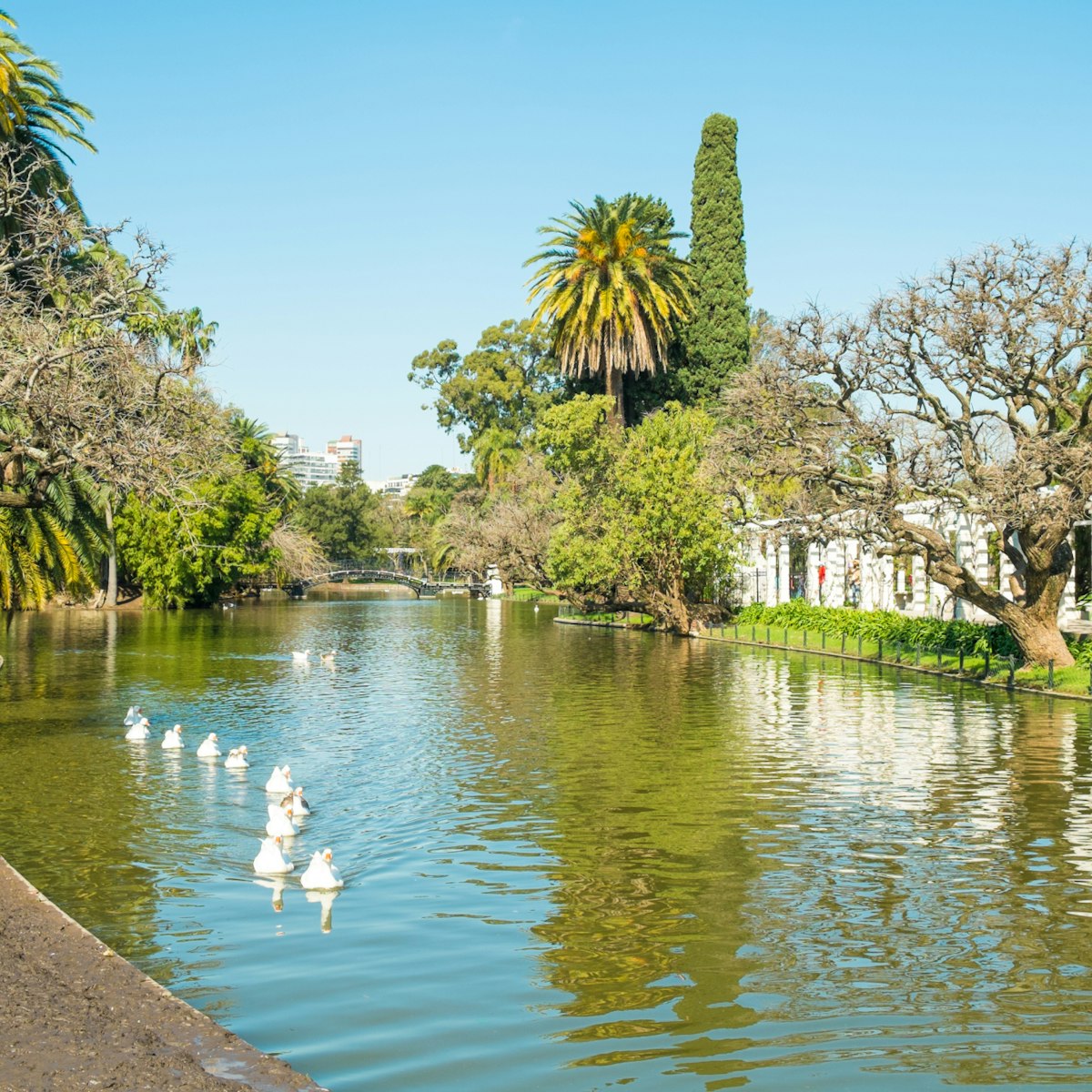
Parque 3 de Febrero
This sweeping park abounds with small lakes and pretty gazebos. Stands rent bikes and in-line skates, and joggers and power walkers circle the ponds – if…
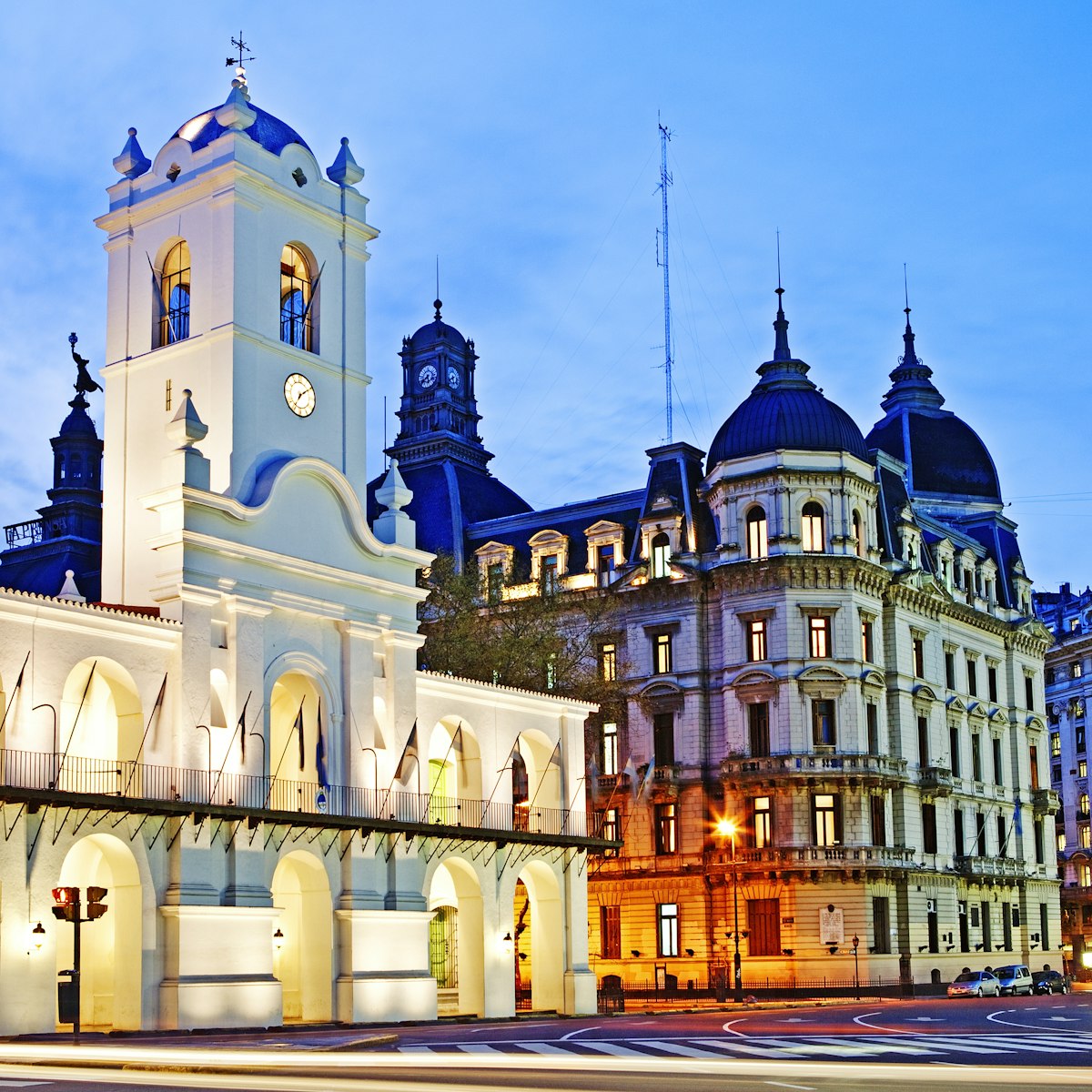
Surrounded by the Casa Rosada, the Cabildo and the city’s main cathedral, Plaza de Mayo is the place where Argentines gather in vehement protest or…
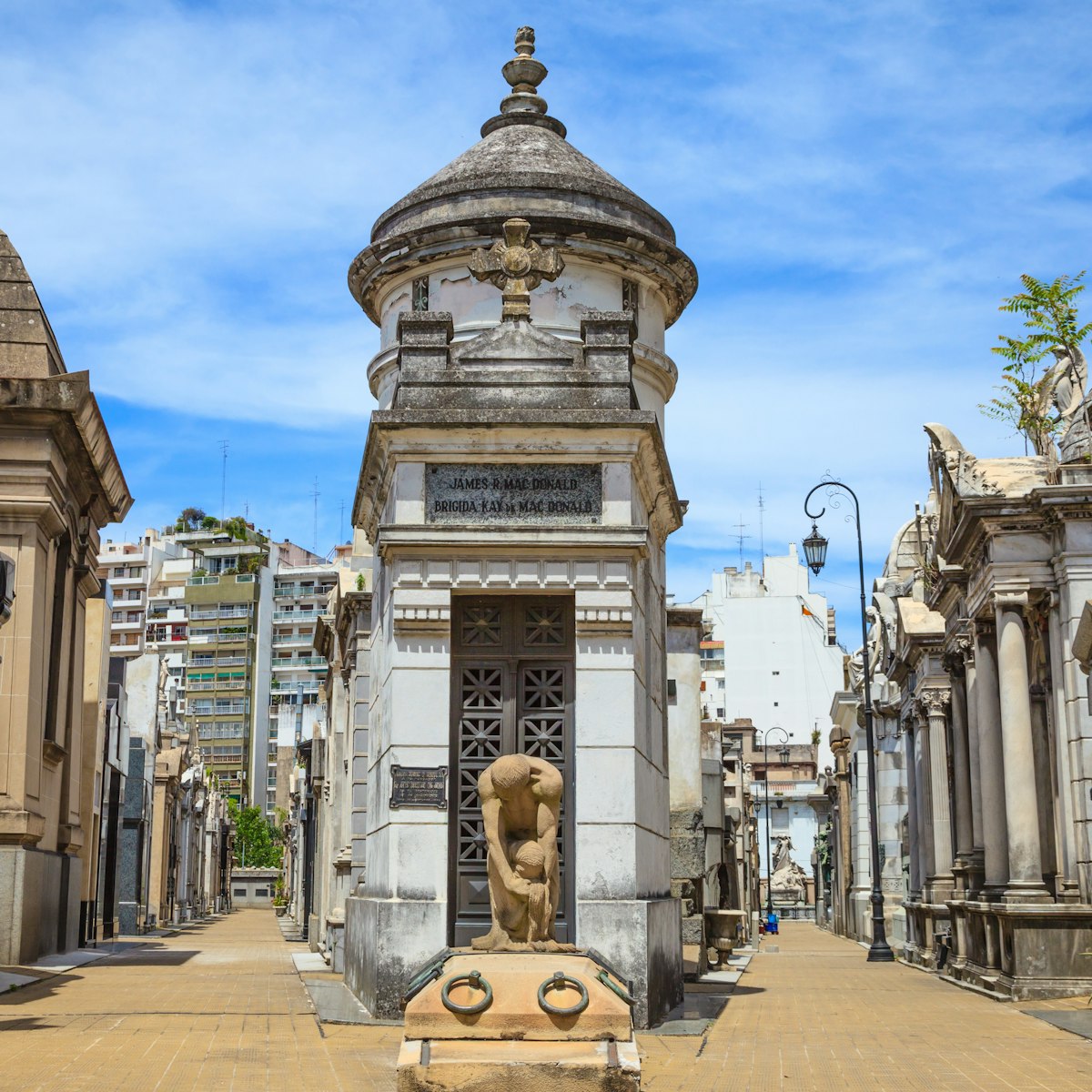
Cementerio de la Recoleta
This cemetery is perhaps BA's top attraction. You can wander for hours in this incredible city of the dead, where the ‘streets’ are lined with impressive…
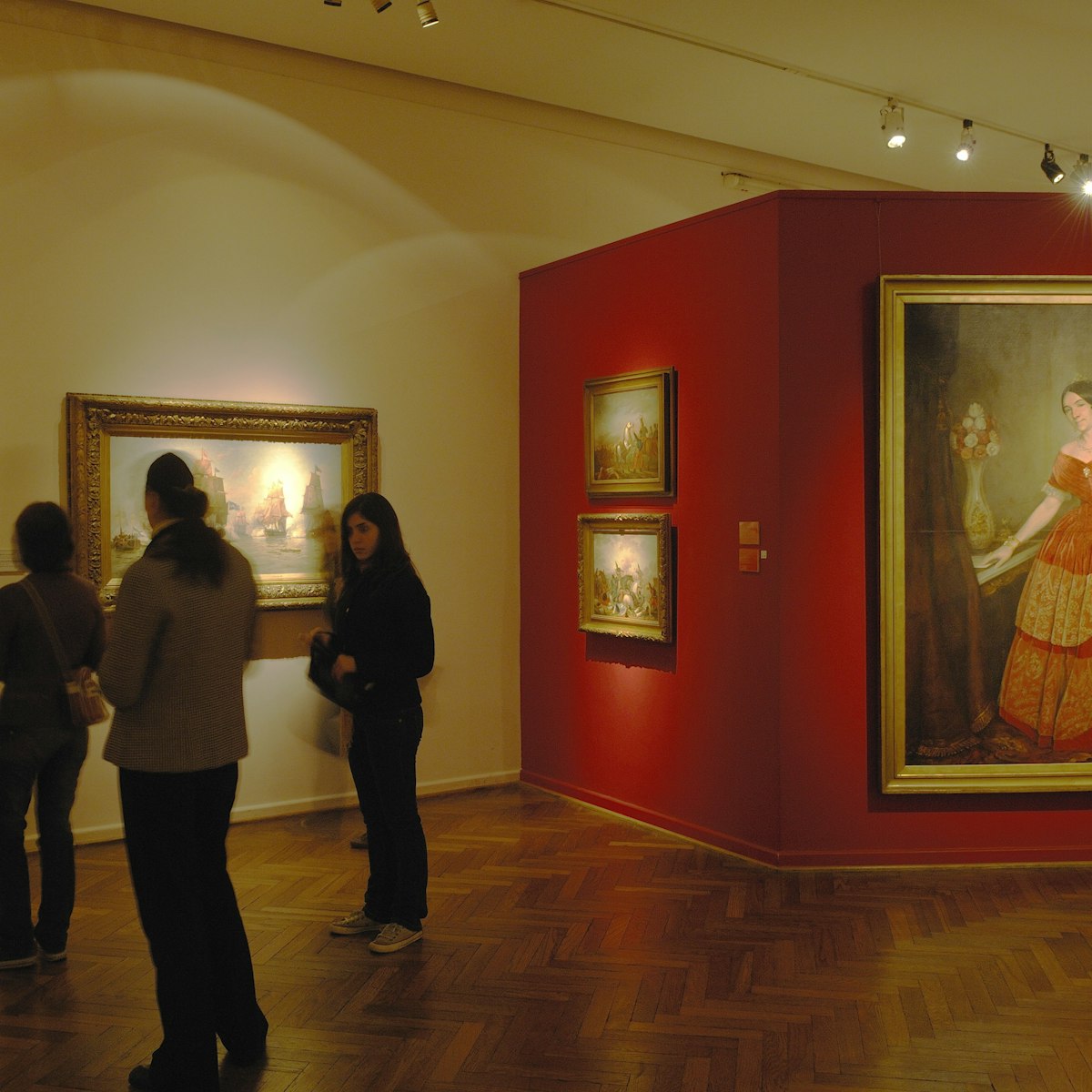
Museo Benito Quinquela Martín
Once the home and studio of painter Benito Quinquela Martín (1890–1977), this fine-arts museum exhibits his works and those of other Argentine artists…
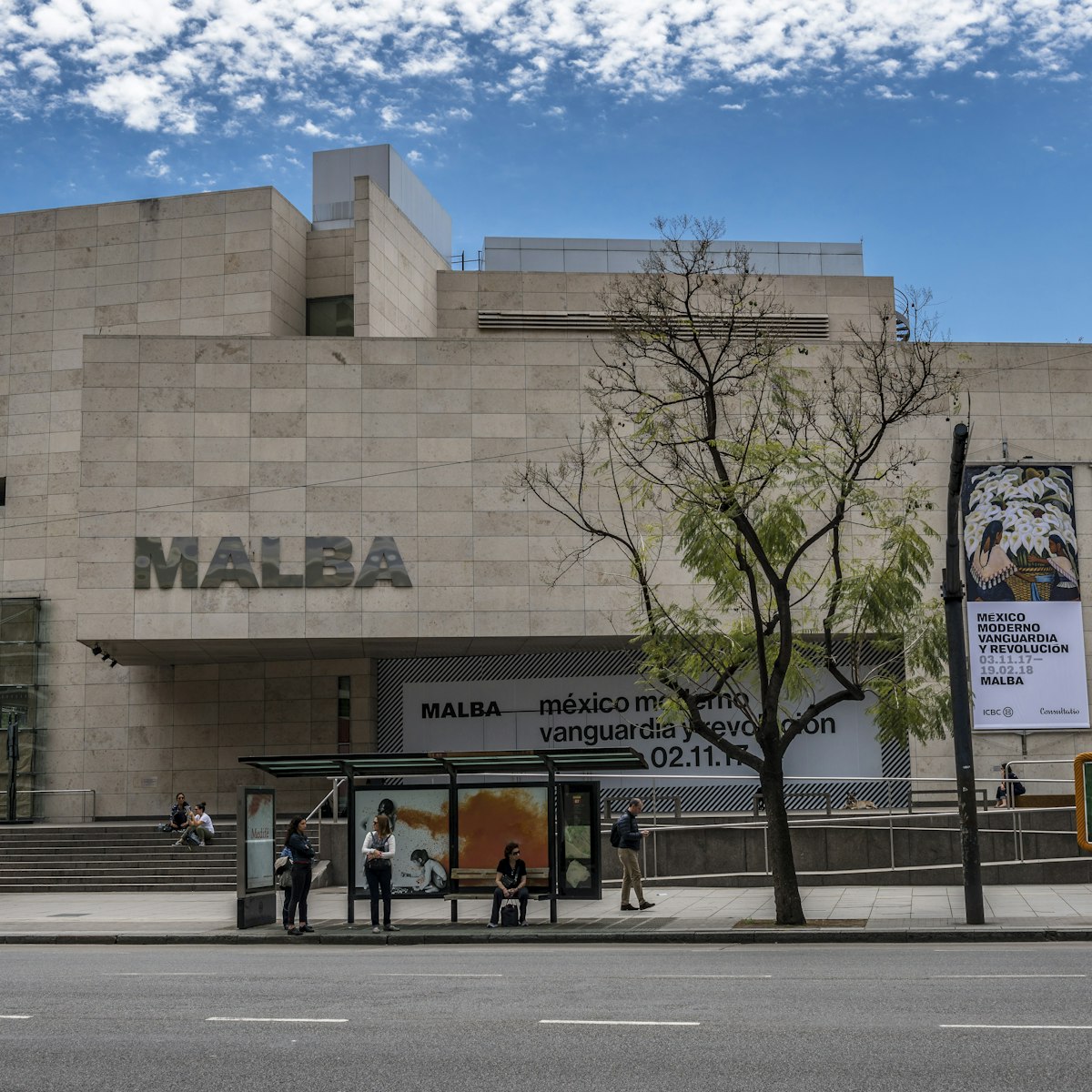
Museo de Arte Latinoamericano de Buenos Aires
Sparkling inside its glass walls, this airy modern-art museum is one of the city's most impressive. It displays the fine Latin American art collection of…
Nearby Buenos Aires attractions
1 . Ministerio de Economía
In June 1955 Argentine naval aircraft strafed Plaza de Mayo in the first step of a military coup, killing more than 300 civilians who were gathered in…
2 . Museo Casa Rosada
Behind the Casa Rosada, look for a glass wedge: it's the roof of this bright and airy museum, housed within the brick vaults of Argentina's old aduana …
3 . Banco de la Nación
The main branch of the Banco de la Nación (1944) is the work of famed architect Alejandro Bustillo, who considered the building to be his best work – he…
4 . Plaza de Mayo
5 . Edificio Libertador
Towering above the Casa Rosada, just south of Parque Colón on Av Colón, is the army headquarters at the Edificio Libertador, the real locus of Argentine…
6 . Farmacia de la Estrella
The Farmacia de la Estrella (1835) is a functioning homeopathic pharmacy with gorgeous woodwork and elaborate late-19th-century ceiling murals depicting…
7 . Catedral Metropolitana
The city's main Catholic church, finished in 1827, is a significant religious and architectural landmark, where Jorge Bergoglio (now known as Pope Francis…
8 . Museo de la Ciudad
This small museum was closed for ongoing renovations at the time of research, but in the future you should expect exhibitions on porteño life and history…

- / --> Home /
- / --> Argentina /
- / --> The Pampas /
- / --> Buenos Aires /
- Casa Rosada
Casa Rosada Tours and Tickets
--> showing tours and activities.

3-Night Best of Buenos Aires Tour

Buenos Aires Half Day City Tour

Private Full Day Buenos Aires Walking Tour

Private Buenos Aires Tour including Lunch and Catulo Tango Show and Dinner

Private Buenos Aires City Tour and Rojo Tango Dinner Show

Private Half Day Tour: Buenos Aires Highlights

Super Saver: Buenos Aires Tour, Tango Show and Dinner

Buenos Aires City Tour and Sailing Boat with Lunch
Visit to the Casa Rosada
A Solemn Building and Accessible To All On a sunny Sunday morning, once we got through the arcade on 50, Balcarce Street, City of Buenos Aires on the entrance of the Casa Rosada , a woman invited us to get inside the patio, the gathering place where visitors are ready to start the tour. “We are about to start the tour, please wait here. You may take some pictures with grenadiers, if you wish.” One by one and in a shy way, Argentinian people and foreigners started to stand up among the grenadiers while a friend, partner or a relative took the picture.
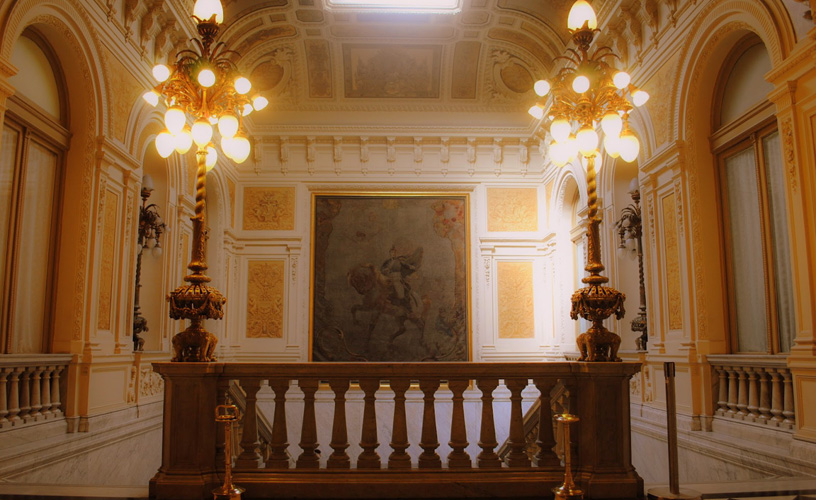
The magnificent Pink House
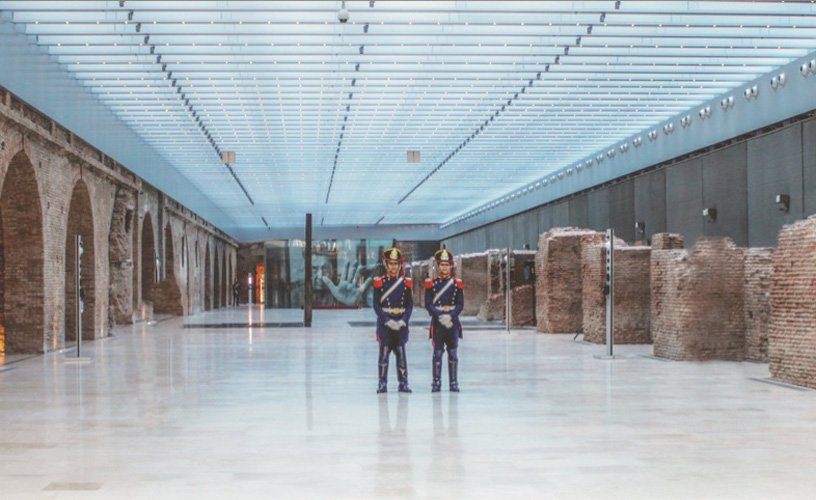
The remains of two historic buildings
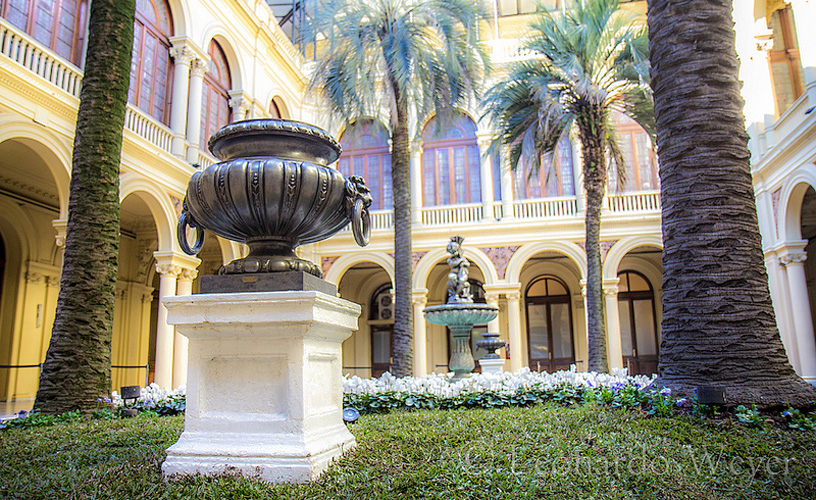
Palm Trees Patio
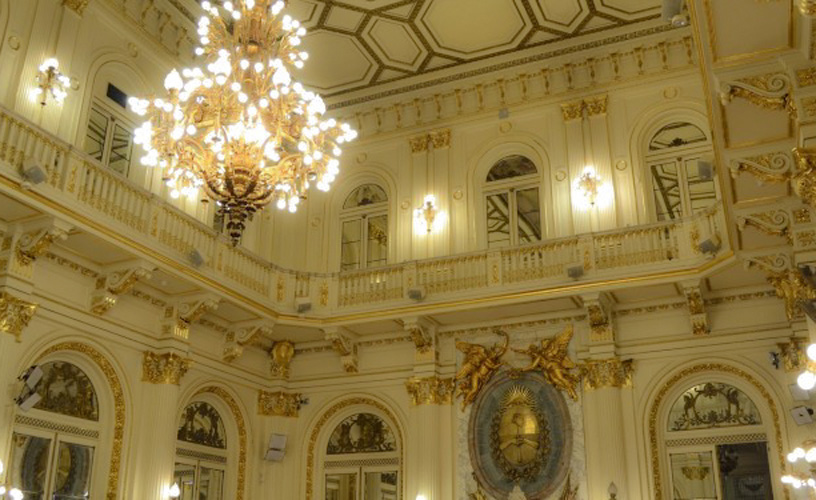
The White Room
Staircases, Hallways and Patios Once a reasonable number of visitors had gathered at the entrance, we started the tour. The grenadiers introduced themselves and explained to us where we were and the meaning of each room. In this way, we went past the staircases used by the press and the patio where a statue in homage to Manuel Belgrano stands. Steps forward, when the first grenadier left us and we went on with the second one, we arrived at the so-called Palm Trees Patio . This section of the Casa Rosada used to serve as the residence of the viceroys and it was in this patio where they welcomed their honorable visitors. The peaceful sound of the fountain made us think for a while about the Argentinian elite society of those times as the grenadier allowed us to take more pictures. The White Room Going up one of the staircases of honor, also known as the Italia Staircase, we reached the second floor, where we could visit the North, South and the White Rooms, used for all kinds of meetings. The White Room has been the customary place for presidents to hold the most important ceremonies; for instance, the ceremony by which the elected head of state holds office and receives the command attributes: the presidential sash and baton. As we stayed in these rooms, we were captivated not only by the magnificence of the building and distinctive decoration but also by the fact that we were in a place where the most historically significant events have occurred. Another staircase of honor led us to the first floor and from such section we headed towards what we thought was the starting point: The Honor Hall and the Gallery of Busts. This is the access point, where presidents and special guests enter the house. We took more pictures and immediately afterwards we got through the door. As we left behind the government house, we could not avoid the feeling that we had visited only a small part of this huge building. However, we knew that we had not visited a museum, which was probably the difference with the rest of our tours, that is, we did not visit a place where historical events are on display, but a place where history really happens.
- Most popular lodging options in Ciudad de Buenos Aires
- Lodging with a pool
- 3 star lodging
- 4 stars and over
- Lodging with SPA
- With free parking
- Pet-friendly
- 2 and 1-star lodging
- Only with published prices
- All Hotels in Buenos Aires
Things to do in Buenos Aires City

From Buenos Aires to Tigre by Helicopter
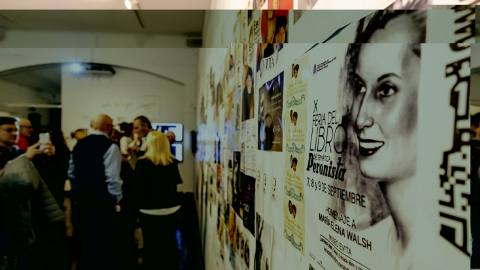
Evita Museum in Buenos Aires

The City’s Museum

Buenos Aires Historic Quarter

BAFICI 2020: Buenos Aires Independent Film Festival

Many-sided Recoleta

Reserva Natural Otamendi

Market of San Telmo

Visit to the Cabildo Yard
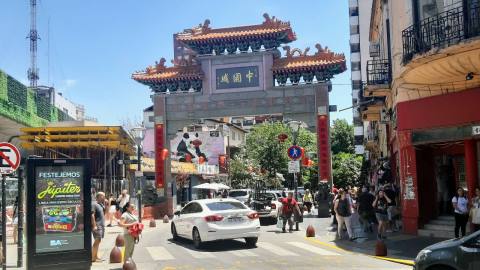
Buenos Aires Chinatown

View more tours and activities
Hotels and accommodations in Buenos Aires City
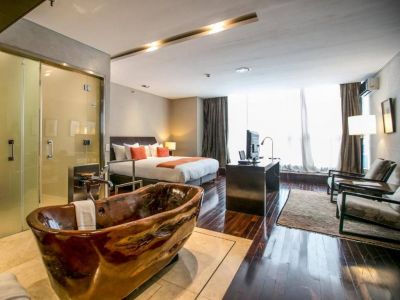
5-star Hotels
Mio Buenos Aires
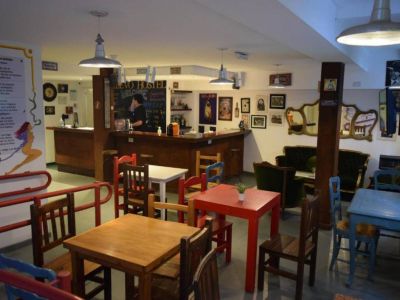
Malevo Muraña
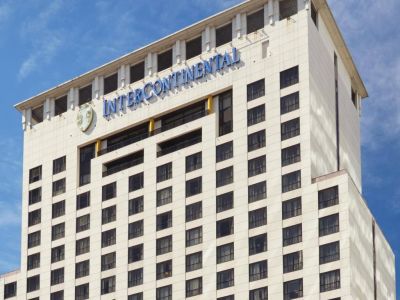
Intercontinental Buenos Aires
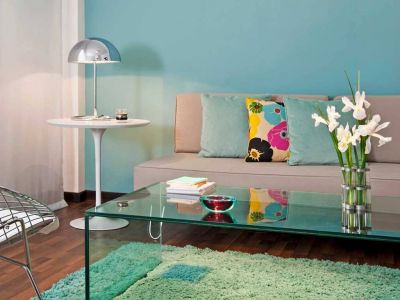
4-star Hotels
Rochester M
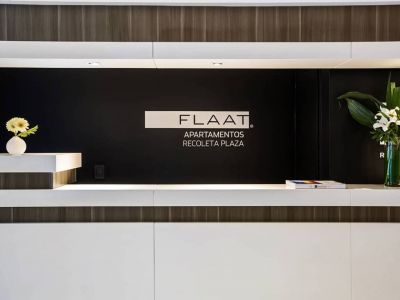
4-star Apart Hotels
Flaat Recoleta Plaza
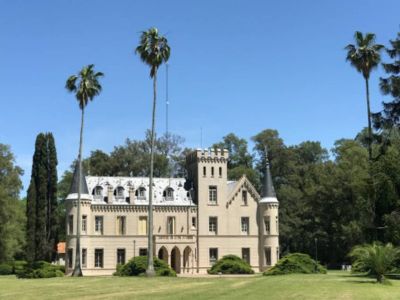
Lodging at Estancias
Estancia & Polo Club La Candelaria
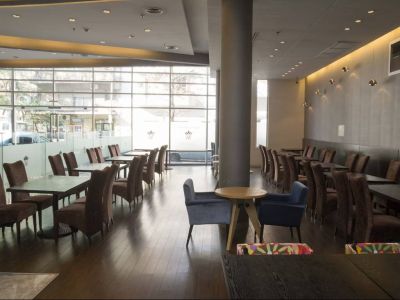
Howard Johnson Abasto
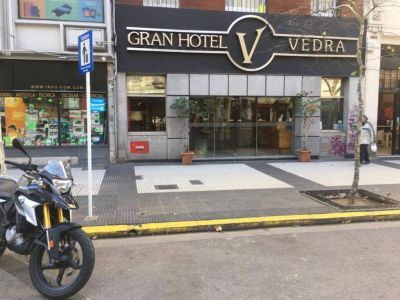
2-star Hotels
Gran Hotel Vedra
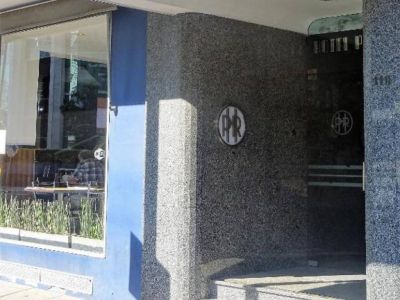
Cristoforo Colombo Suites
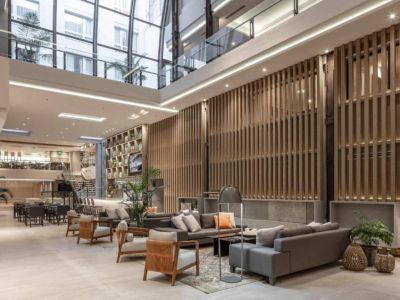
Huinid Obelisco Hotel
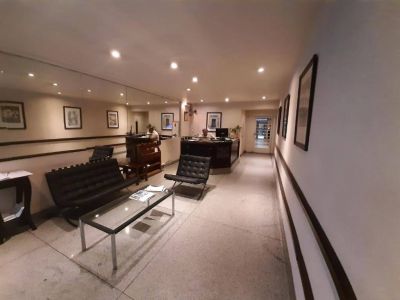
Apart Hotels
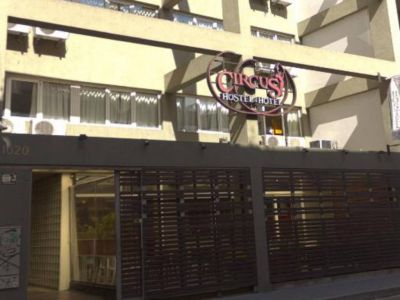
Circus Hostel & Hotel
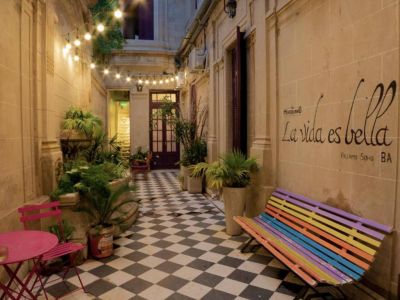
Meridiano Hostel
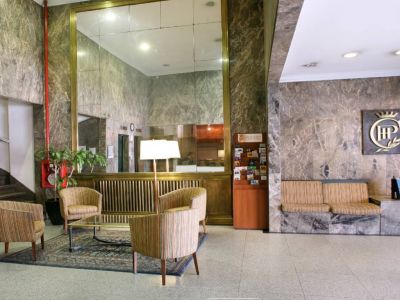
3-star Hotels
Constitución Palace

Buenos Aires City
View more lodging
Terminos y condiciones
Tour of the Casa Rosada
The US might have the White House, but Argentina has the Pink House. The Casa Rosada at the eastern extreme of the Plaza de Mayo is the seat of the country’s government, where the President and her staff work. On weekends, you can tour the building for free.
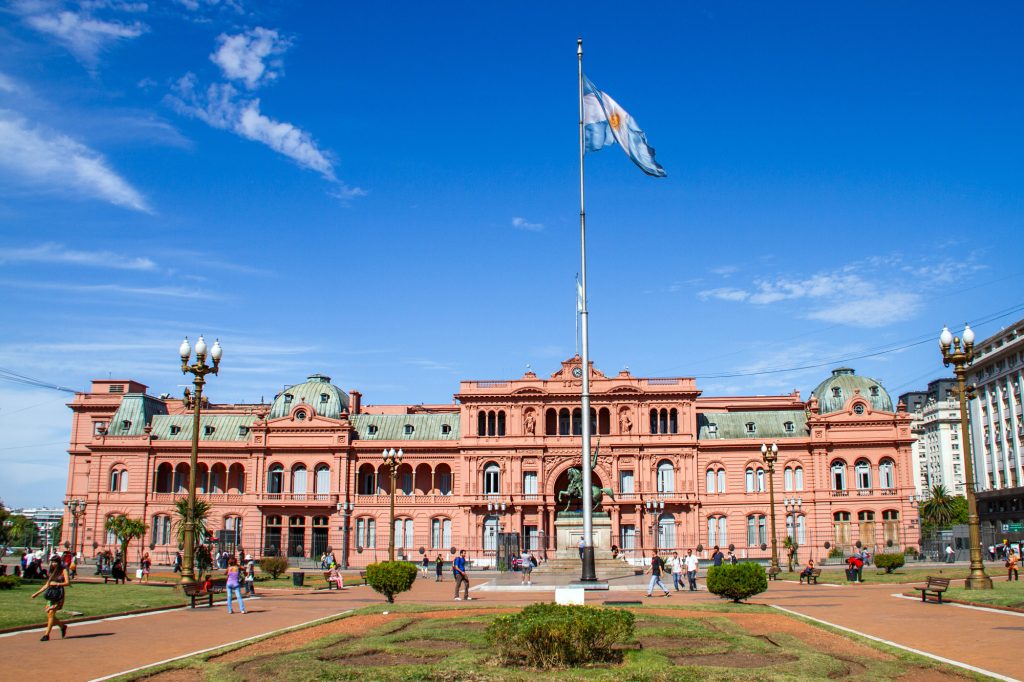
Unlike America’s White House, the President doesn’t live inside the Casa Rosada. But very much like America’s Jennifer Lopez, the building is most frequently photographed from behind. The front of the Casa Rosada faces towards Parque Colón, and people taking pictures from the Plaza de Mayo are actually admiring its boomin’ rear facade. The back balcony is where Eva Peron delivered her famous speeches.

Evita’s presence still looms large over the Casa Rosada, which is more correctly known as the Casa del Gobierno. Along with a huge group of about 60, mostly Argentinians, we were led the premises around by a decoratively outfitted soldier. There was a gallery of important South American leaders, a gorgeous courtyard with a fountain, classic artwork on the walls and stunning interior architecture. We were able to get out onto the balcony, and look out over the Plaza just as Evita once did. I’ll give you one guess what song I was humming . We were even allowed entrance into the President’s office.
The house’s strange color has a poetic meaning of its own. Pink was chosen as a way to soothe relations between rival political parties, by symbolically mixing their colors: red and white. It looks beautiful, particularly at dusk. The Casa Rosada has been the heart of Argentine politics since the country’s founding.
More Casa Rosada Photos:

- Post published: February 19, 2011
You Might Also Like
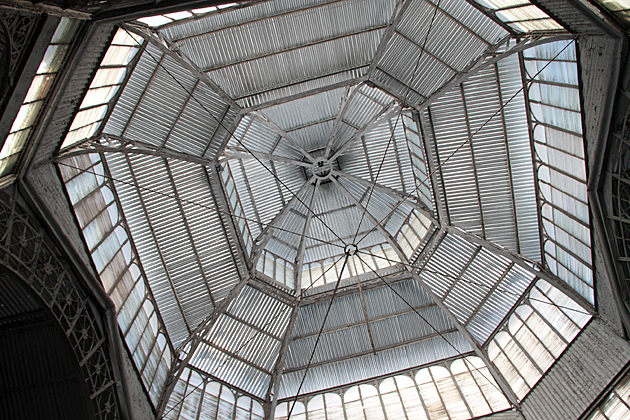
San Telmo’s Market Hall
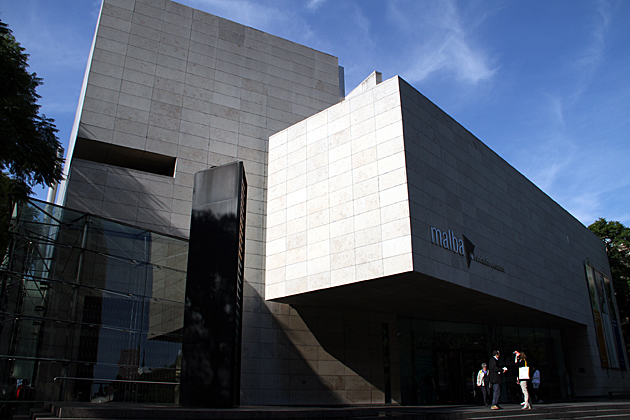
The MALBA – Museum of Latin American Art
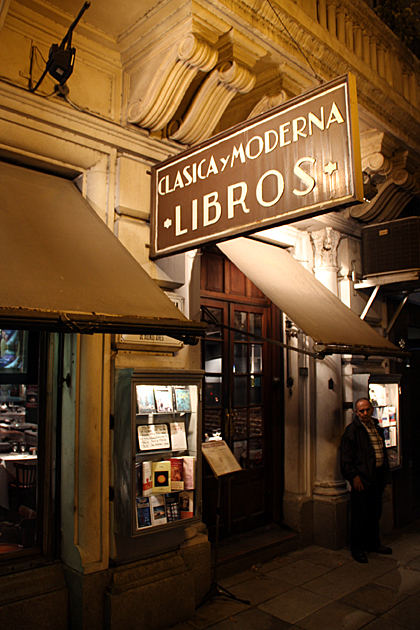
Bar (Notable) Hopping
This post has one comment.
Great pictures!! It’s great the pink house! Did you see the elevator? it’s a masterpiece!!
Leave a Reply Cancel reply
- Skip to main content

- Home Buenos Aires
- Intensive Group Classes
- University Program
- Private One-on-One
- Private Group
- Argentina Study Visa
- TEFL Course
- Evening & Weekend Classes
- 1 Day Crash Course
- Classes for Kids & Families
- Spanish Classes
- Study Visa and Work Visa
- Learn Spanish in Mendoza
- Clases de Inglés
- Home Malaga
- Group Classes
- Private 1-on-1
- Spanish Study Visas
- Spanish for Seniors
- Kids Summer Camp
- Spanish for Kids
- Bildungsurlaub Course in Malaga
- Pricing Buenos Aires
- Pricing Málaga
- Pricing Online
- Spanish Students Visas
- 🇦🇷 🏡 Homestay in Buenos Aires
- 🇪🇸 🏡 Homestay in Málaga
- Private Apartment in Málaga
- Airport Transfer Buenos Aires
- Free Coworking in Malaga
- Workshops & Activities
- Volunteering in Buenos Aires
- Tango Classes
- Yoga Classes
- Why Spanish in Málaga
- Why Spanish in Argentina?
- 👨💼CORPORATE SPANISH
- 🚀 Ready to get started?
- 🎓 REGISTER NOW
- 📞 CONTACT US

November 7, 2023 · Buenos Aires
Explore The Casa Rosada The Pink House: Argentina’s Icon
Send on WhatsApp
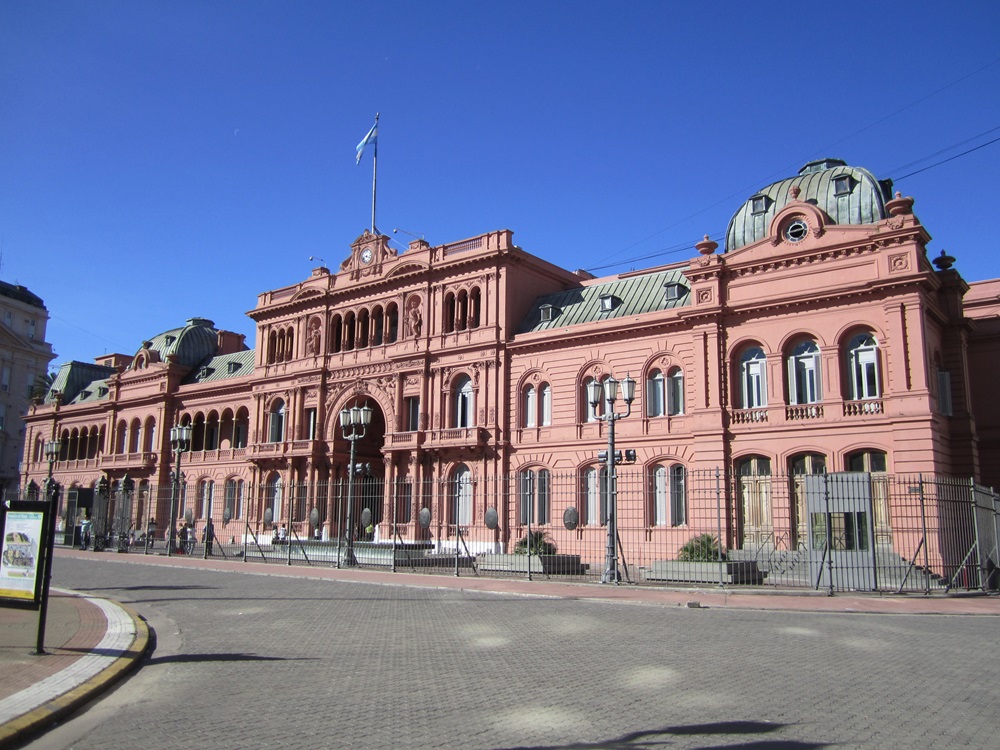
Welcome to the Casa Rosada, also known as the Pink House, a South American government headquarters and a prominent Buenos Aires landmark . This historical and iconic building is notable for its distinctive pink color and plays a significant role in Argentine politics. Let’s discover the fascinating history, architecture, and cultural significance of the Casa Rosada.
Key Takeaways:
- The Casa Rosada, also called the Pink House, is a historical and iconic landmark in Buenos Aires.
- It serves as the seat of the Argentine national government and is a symbol of Argentine politics .
- The Casa Rosada offers free guided tours in English and Spanish, allowing visitors to explore its rich history.
- The iconic pink color of the building has become synonymous with Argentine culture and heritage.
- The Plaza de Mayo , where the Casa Rosada is located, has been a site of significant historical events and protests.
History of the Casa Rosada
The Casa Rosada, with its historical architecture and status as the executive mansion and residence of Argentinian presidents, holds a fascinating history. The construction of the Casa Rosada began on the site of a Spanish fort established in 1580. Over the years, it underwent various transformations, including becoming a customs house designed by British architect Edward Taylor.
Also read about: Explore Buenos Aires Architecture on Bike – Your Next Adventure
In 1862, under President Bartolomé Mitre, the Casa Rosada officially became the seat of the Argentine government. Subsequent expansions took place, and it is believed that President Domingo Faustino Sarmiento ordered the building to be painted pink, giving it its distinctive color. The Casa Rosada has served as the residence of several Argentinian presidents and has witnessed numerous key moments in the country’s history.
The Evolution of the Casa Rosada
Throughout its existence, the Casa Rosada has undergone significant changes in its design and purpose. From its origins as a fort to its current role as the iconic symbol of Argentine politics , the building has stood the test of time. Each expansion and renovation has added to its architectural splendor, making it a sight to behold for visitors from around the world.
Also read about: Complete Guide to Argentina Congress in Buenos Aires
Casa Rosada’s Influence on Argentine Politics
The Casa Rosada has always been at the center of Argentine political power. As the official government headquarters, it has witnessed the rise and fall of leaders, the implementation of policies, and the staging ground for pivotal moments in the nation’s history. Its iconic pink color has become synonymous with Argentine politics, making it a significant cultural and historical landmark.
The Casa Rosada continues to play a vital role in the country’s political landscape, serving as the backdrop for presidential announcements and addresses to the public. The famous balcony speeches by Juan and Eva Perón during the mid-20th century cemented the Casa Rosada’s place in history and popular culture.
The Casa Rosada’s Significance
The Casa Rosada stands not only as an architectural marvel but also as a symbol of Argentine identity and heritage. From its humble beginnings as a fort to its transformation into the seat of government, it represents the resilience and determination of the Argentine people. Visiting the Casa Rosada offers a glimpse into the nation’s past and its ongoing journey as a democratic nation.
Visiting the Casa Rosada
The Casa Rosada, with its historical significance and vibrant pink façade, is a popular tourist attraction in Buenos Aires. If you’re planning a visit, here’s what you need to know.
Free Guided Tours
One of the best ways to explore the Casa Rosada is by taking advantage of the free guided tours offered. These tours provide insightful information about the building’s history, architecture, and political significance. Guided tours are available in both English and Spanish, allowing visitors to fully immerse themselves in the experience.
Looking to start intensive Spanish courses in Buenos Aires ?
To reserve a spot on a guided tour, simply visit the official Casa Rosada website. Keep in mind that it’s necessary to bring your passport for identification purposes. These tours provide a unique opportunity to learn about Argentina’s government headquarters and its role in shaping the nation’s history.

Casa Rosada Museum
Located behind the palace, the Casa Rosada Museum offers visitors the chance to delve deeper into Argentina’s rich heritage. The museum showcases exhibits that span from colonial times to the present, providing insight into the country’s cultural and political evolution. Entry to the museum is free, and it’s open on Wednesdays to Sundays, as well as on public holidays.
Inside the Casa Rosada Museum , you’ll find a variety of artifacts and displays that highlight key moments in Argentina’s history. From presidential memorabilia to exhibits on colonial times, the museum offers a comprehensive look at the country’s past. Don’t miss the opportunity to explore this immersive cultural experience during your visit to the Casa Rosada.
As you make your way through the Casa Rosada and its museum, you’ll gain a deeper understanding of Argentina’s vibrant history and its political significance. Whether you’re drawn to the iconic pink color, the architectural marvels, or the historical events that have taken place here, a visit to the Casa Rosada is a must for any traveler to Buenos Aires.
The Iconic Pink Color
The distinctive pink color of the Casa Rosada has become synonymous with Argentine politics and is a significant cultural heritage site . This iconic pink building stands out among the other structures in Buenos Aires, capturing the attention of locals and tourists alike.
Also read about: Independence Day of Argentina: The Heart of Cultural Pride
The exact origin of the pink color is a subject of debate and speculation. One theory suggests that the color was chosen as a way to diffuse political tensions by combining the colors of opposing political parties. Another theory suggests that the pink hue was achieved by using cows’ blood as an alternative to paint due to the high humidity in the area. Regardless of its origin, the pink color has become an integral part of the Casa Rosada’s identity.
As a symbol of Argentine politics , the Casa Rosada has witnessed countless significant events and protests throughout history. It has served as a backdrop for iconic moments, such as speeches delivered by Juan and Eva Perón from the balcony, as well as being a gathering place for political movements.
Table: Casa Rosada – Symbol of Argentine Politics
The Casa Rosada’s pink color continues to captivate visitors and serves as a constant reminder of Argentina’s political past. Exploring this iconic building and understanding its historical significance is a fascinating experience for anyone interested in the country’s culture and politics.

Architectural Features of the Casa Rosada:
Interesting trivia about the casa rosada.
The Casa Rosada, with its illustrious history and cultural significance, holds several interesting pieces of trivia that add to its allure. One fascinating fact is that Roque Sáenz Peña was the only president who actually lived in the Casa Rosada, residing there from 1910 to 1914. As the seat of the Argentine government, the Casa Rosada is an amalgamation of various buildings that were constructed on the site over the years. Originally a fort established by the Spanish, it later transformed into a customs house and was eventually expanded to become the presidential palace. This unique evolution of the Casa Rosada showcases the rich layers of history and architectural transformation that it embodies.
In addition to its historical significance, the Casa Rosada offers a glimpse into the construction techniques of its time. The building’s distinctive pink color, a symbol of Argentine politics, is not merely due to paint but is the result of a combination of materials and methods used during the construction. This intriguing blend of construction elements further adds to the Casa Rosada’s architectural charm and mystique. The Casa Rosada stands as a testament to the skill and creativity of the architects and builders involved in its creation, making it a fascinating subject for architectural enthusiasts.
Visitors to the Casa Rosada can explore its interior and discover the intricate details that make it a masterpiece of design and craftsmanship. From the Arch of Tamburini, crafted by Italian architect Francisco Tamburini, to the various rooms and halls that once housed Argentine presidents, every corner of the Casa Rosada exudes historical significance. The fusion of architectural styles and influences within the building reflects the evolving nature of Argentine society and politics throughout the years. It is this blend of history, architecture, and cultural heritage that makes the Casa Rosada a must-visit destination for anyone seeking a deeper understanding of Argentina’s past and present.
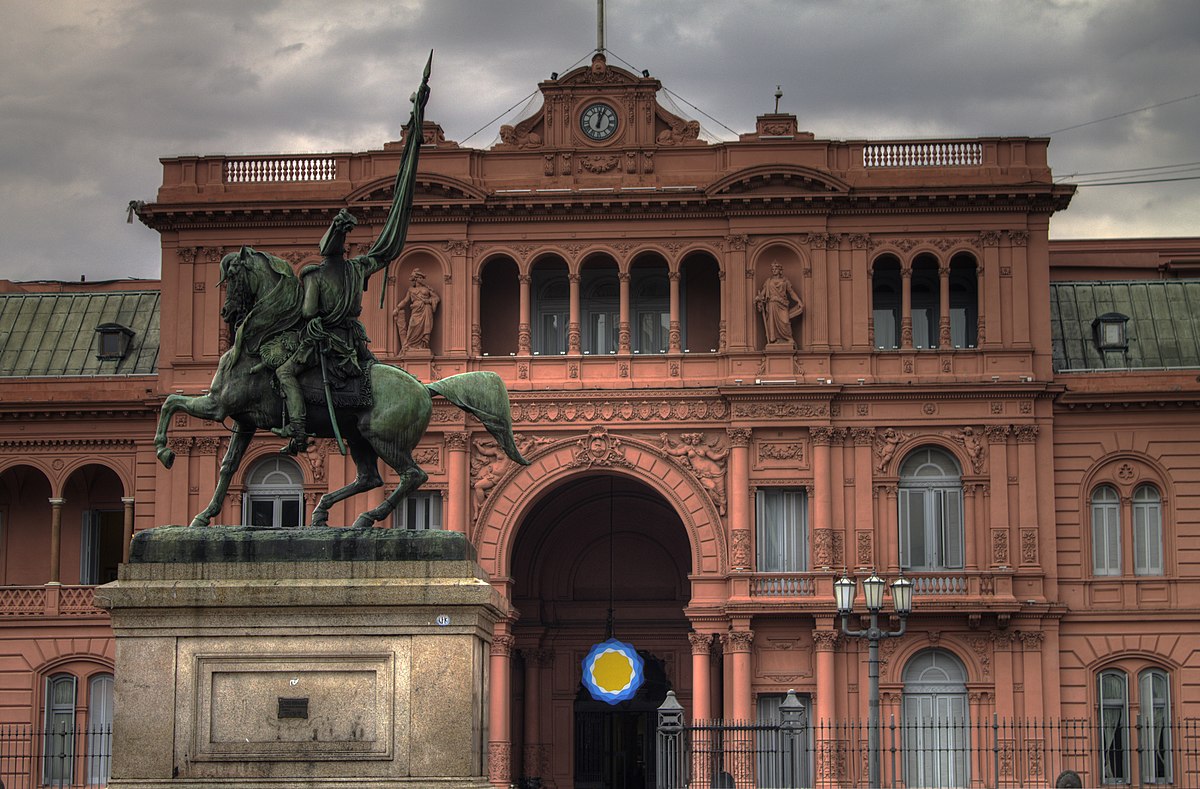
Construction of the Casa Rosada
The construction of the Casa Rosada is a testament to the evolution of Argentine architecture and the country’s political history. The building’s origins as a fort under Spanish rule, followed by its transformation into a customs house, and ultimately its expansion to become the presidential palace, represent different phases in the nation’s development. Each stage of construction showcases the architectural styles and influences prevalent during that period, offering insight into the changing face of Buenos Aires and Argentina as a whole.
The Casa Rosada Museum
The Casa Rosada Museum , located behind the palace, offers visitors a fascinating glimpse into Argentina’s past through its collection of presidential memorabilia and exhibits showcasing the country’s colonial history. The museum serves as a cultural repository, preserving and presenting artifacts that shed light on Argentina’s rich heritage.
Step into the museum and you’ll be greeted by a diverse range of exhibits that chronicle the country’s historical narrative. From colonial artifacts to personal belongings of past presidents, the Casa Rosada Museum provides a unique opportunity to delve into Argentina’s political and social history.
One of the highlights of the museum is a mural created by Mexican artist David Alfaro Siquieros. This magnificent artwork depicts important scenes from Argentine history, capturing the spirit and struggles of the nation. As you explore the museum, you’ll also come across interactive displays and informative panels that provide further insights into Argentina’s colonial past and the impact of its presidents on the country’s development.
The Casa Rosada Museum, located behind the palace, offers visitors a fascinating glimpse into Argentina’s past through its collection of presidential memorabilia and exhibits showcasing the country’s colonial history. The museum serves as a cultural repository, preserving and presenting artifacts that shed light on Argentina’s rich heritage.
Visiting the Casa Rosada Museum is a captivating journey through Argentina’s history. Whether you’re a history enthusiast, a political buff, or simply curious about the country’s past, this museum provides a comprehensive and immersive experience that shouldn’t be missed.
The Plaza de Mayo is not only visually stunning but also holds a deep historical and political significance for Argentina. It has been a site of mass protests and symbolic gatherings , providing a platform for the public to express their opinions and demands to the government. Over the years, the plaza has witnessed protests by various groups, including the Mothers and Grandmothers of the Plaza de Mayo, veterans of the Malvinas War, and other political movements.
Surrounding the Casa Rosada and Plaza de Mayo are other architectural marvels such as the Cabildo, a historic government building, the May Pyramid, a monument commemorating the May Revolution, and the Metropolitan Cathedral of Buenos Aires. These landmarks collectively create a vibrant and culturally significant area that showcases the city’s heritage and historical importance.
Plaza de Mayo and its Historical Significance
The Plaza de Mayo has played a crucial role in Argentina’s history, serving as a central gathering place for important events and movements. It became the epicenter of political activism during the Dirty War, as the Mothers and Grandmothers of the Plaza de Mayo protested against the disappearance of their loved ones. These brave women demanded justice and accountability from the government, leaving an indelible mark on the country’s collective memory.
Today, the Plaza de Mayo continues to be a symbol of resilience and civic engagement, reminding visitors of Argentina’s complex past and the ongoing struggle for social justice. It is a place where history comes alive, inviting both locals and tourists to reflect on the country’s turbulent past and its aspirations for a better future.
Protest and Political Significance
The Plaza de Mayo, with the Casa Rosada as its backdrop, holds immense political and historical significance in Buenos Aires. It has been a site of mass protests and symbolic gatherings for decades, serving as a powerful platform for the public to voice their opinions and demands to the government. The plaza has witnessed countless demonstrations by various groups, including the renowned Mothers and Grandmothers of the Plaza de Mayo, veterans of the Malvinas, and other political movements.
Do you want to learn Spanish? Best Spanish schools in Malaga
The mass protests held in the Plaza de Mayo reflect the deeply ingrained spirit of activism and political engagement in Argentina. The open space in front of the Casa Rosada provides a rallying point for individuals and groups to come together and express their concerns, advocating for social justice, human rights, and political change. The plaza has become a symbol of resistance and resilience, representing the unwavering determination of the Argentine people to fight for their rights.
The Plaza de Mayo has seen historic moments of unity and dissent, as well as the mobilization of social movements that have shaped the course of Argentine history. Whether it be demanding justice for the victims of human rights abuses during the Dirty War or advocating for economic reforms, the plaza remains a significant platform for political expression and civic engagement. It embodies the collective struggle for a more equitable and democratic Argentina.
Examples of Significant Protests and Gatherings
These examples represent just a fraction of the significant protests and gatherings that have taken place in the Plaza de Mayo. Each event has contributed to the ongoing dialogue and activism in Argentina, serving as powerful reminders of the country’s complex political landscape and the resilience of its people.
The Casa Rosada, with its rich history, iconic pink color, and significant role in Argentine politics, stands as a symbol of the country’s cultural heritage. This South American government headquarters has been the residence of many Argentinian presidents and has witnessed countless historical events.
Visiting the Casa Rosada is a must for any tourist in Buenos Aires. The free guided tours provide a fascinating insight into the building’s history and its impact on Argentine politics. In addition, the Casa Rosada Museum offers an opportunity to delve deeper into Argentina’s colonial past and explore presidential memorabilia.
Located in the historic Plaza de Mayo, the Casa Rosada not only offers architectural beauty but also represents a space where the public can voice their opinions and gather for protests. The plaza has seen significant political movements and serves as a reminder of Argentina’s fight for justice and democracy.
By exploring the Casa Rosada and its surroundings, visitors gain a unique understanding of Argentina’s past and present. Whether it’s admiring the architectural charm, learning about the country’s history in the museum, or witnessing a political gathering in Plaza de Mayo, the Casa Rosada offers an enriching experience for all who visit.
Special Promotion on our Online Group and Individual Classes!
Can't travel to us? No problem. We can bring you the same Spanish learning experience online and at a SPECIAL PRICE!
- 10-hr weekly group classes - ONLY AT $99/WEEK
- Personalized one-on-one classes - ONLY AT $20/HR
Sign up is easy. Just tell us what you're interested in and we'll get you started in no time.
I WANT TO LEARN SPANISH ONLINE IN*:
- GROUP CLASSES
- PRIVATE CLASSES
- First Name *
- Last Name *
- Email This field is for validation purposes and should be left unchanged.
Tagged: Discover Buenos Aires , Pink House , tourist
Share this post!
Start your Spanish Immersion Experience Today. We offer both In-Person and Online Spanish Classes. Discover Our Malaga School or our Buenos Aires School . No matter your plans VAMOS Academy has a course for you!
Join the conversation on social:
RELATED ARTICLES:
Saber and conocer explained: the how, why, when, and where guide.
Saber vs Conocer – How and When to Use Them Have you ever done…
Argentina National Holidays Calendar 2024 Overview
One key holiday is May 25th, Argentina’s Independence Day, marking 202 years since freedom…
Vegan and Vegetarian in Buenos Aires. Our Guide to Food and Restaurants
In the land famed for its asado and tango, an astonishing 12% of residents…
Top 6 Best Things to See and Do in Argentina
Argentina presents an unmatched blend of natural wonders and cultural depth, beckoning adventurers and…
SPANISH CLASSES: BEGINNER TO ADVANCE. START TODAY!
- ONLINE SPANISH CLASSES
- LEARN SPANISH IN ARGENTINA
- LEARN SPANISH IN SPAIN
- ENROL TODAY
HIGHLY RATED & REVIEWED

TripAdvisor
HALL OF FAME
I took a four-week course at Vamos and was delighted with the experience. The course is conversation-intensive, which was incredibly useful given that speaking tends to be the most difficult skill.
Vamos Spanish Academy offers an outstanding educational experience. I spent a total of 12 exceptional weeks at the school.
I can also recommend highly the home stay feature of the course. I stayed with an Argentinian in the next suburb who only spoke Spanish, but who was very patient with me as I improved.
My Spanish improves by the hour! The staff and academic director do everything in their power to make your stay as comfortable as possible.
- Français ( French )
- Português ( Portuguese (Brazil) )
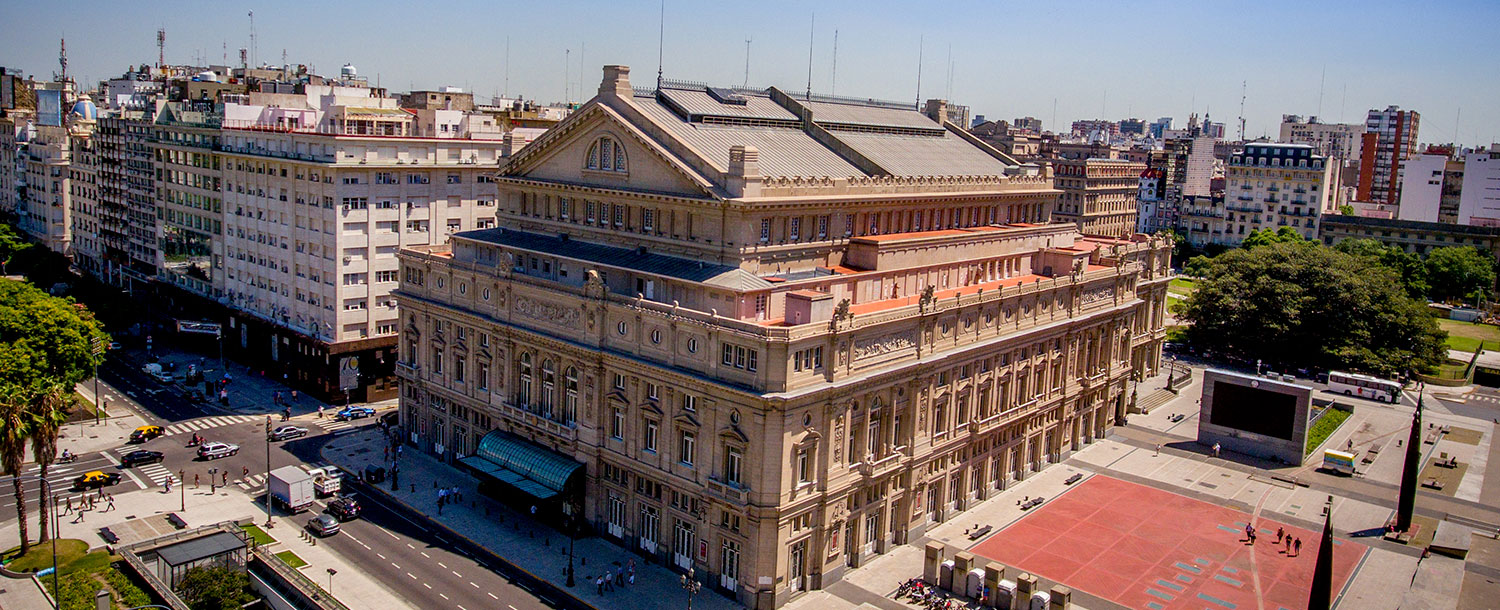
Teatro Colón
Don't miss one of the world's most majestic opera houses, acclaimed for its architecture and acoustics.
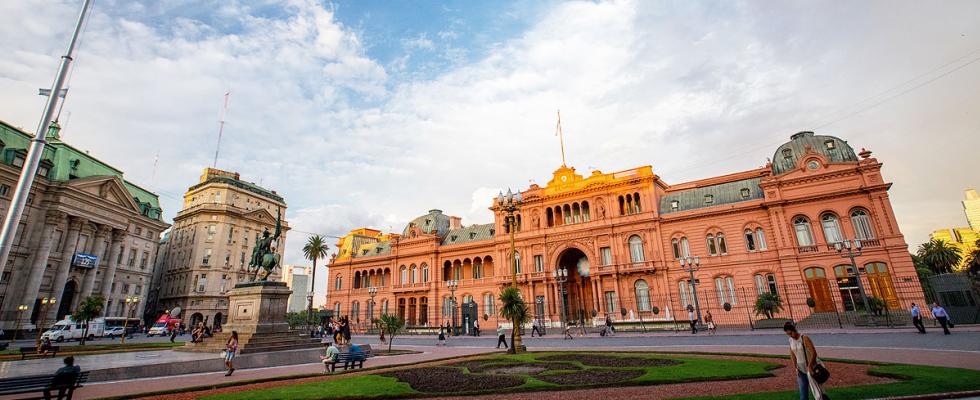
Casa Rosada
Visit Buenos Aires' iconic pink governmental palace.
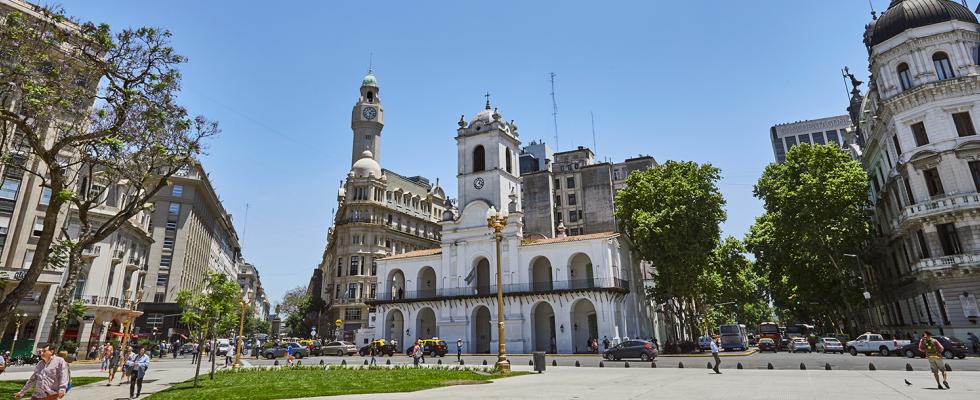
The Cabildo
Admire this colonial town hall dating back to 1580.
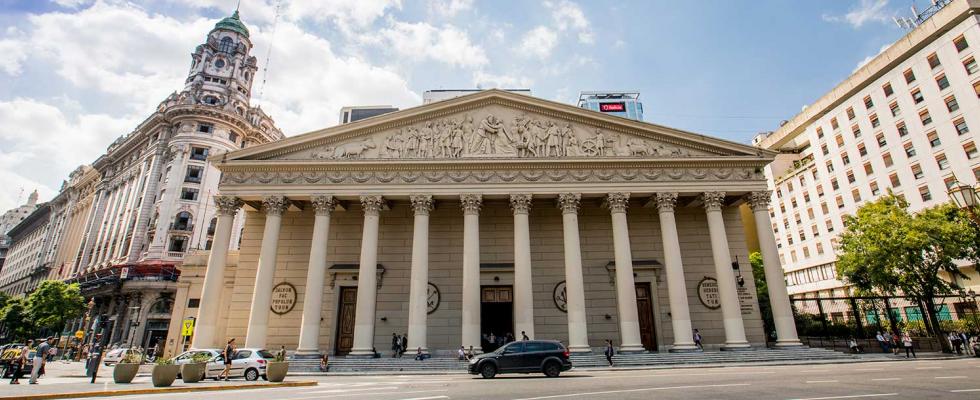
The Metropolitan Cathedral
Where Pope Francis led mass as Archbishop of Buenos Aires.
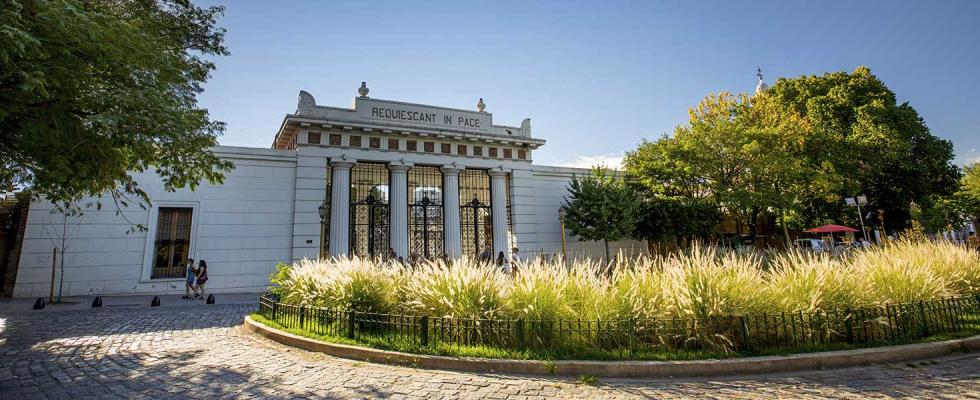
Recoleta Cemetery
Lose yourself for hours in this labyrinthine city of the dead.
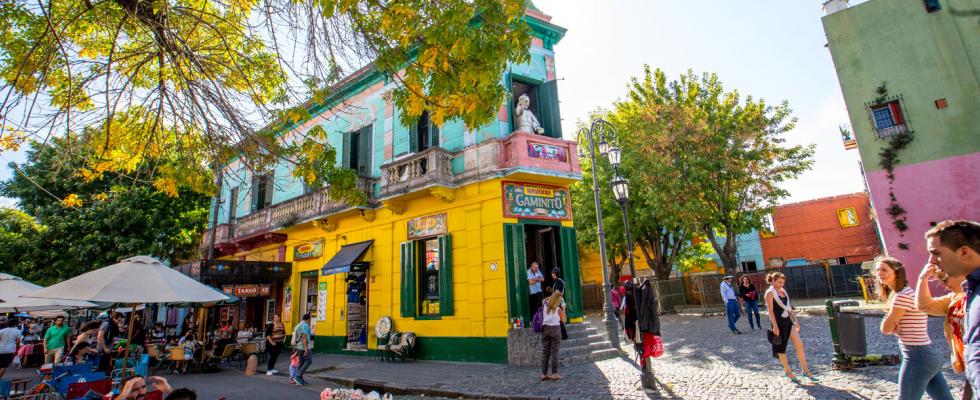
Take a stroll through Buenos Aires' famously colourful street museum.
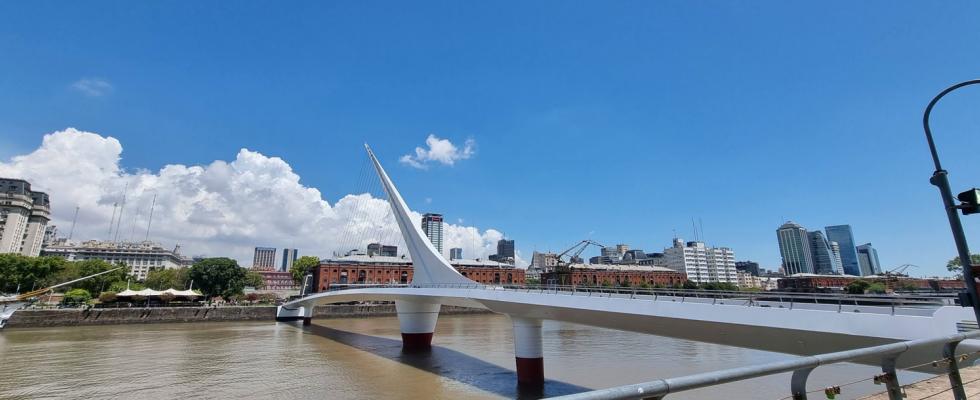
Puente de la Mujer
Inspired by tango, this landmark rotating footbridge was designed by Santiago Calatrava.

Ecological Reserve
Explore the city's largest and most biodiverse green space.
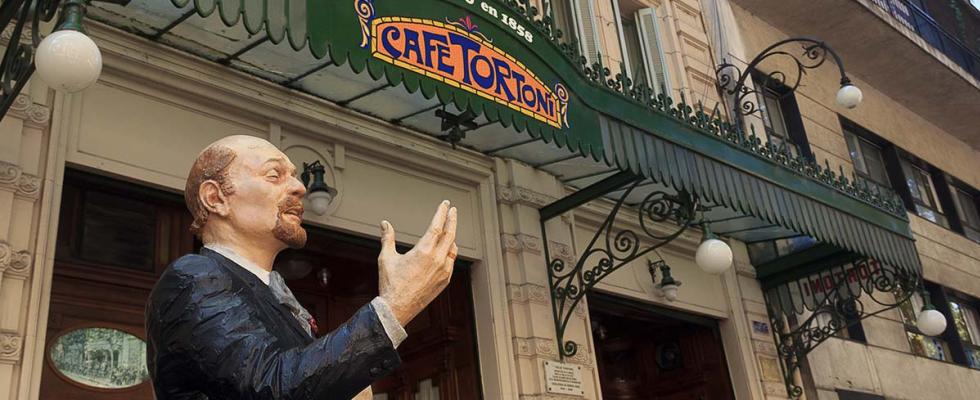
Café Tortoni
Pop in for a coffee steeped in history at the city´s oldest cafe.
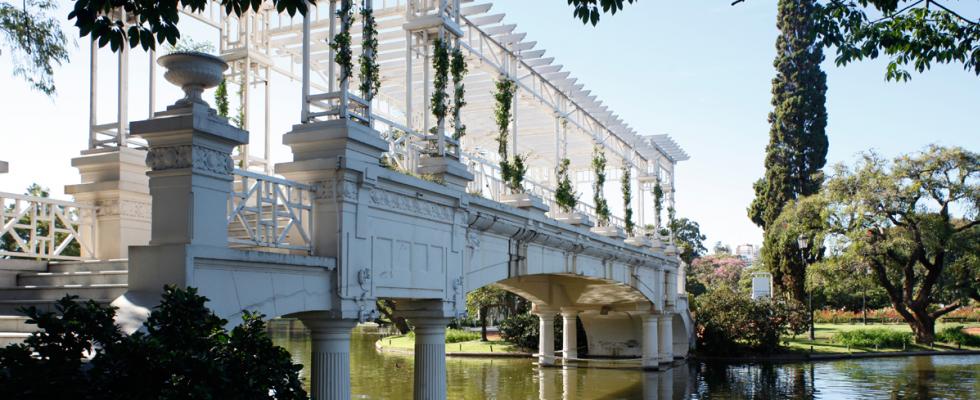
Palermo rose garden
A garden with more than 18,000 roses surrounded by a lake in the heart of Tres de Febrero park.
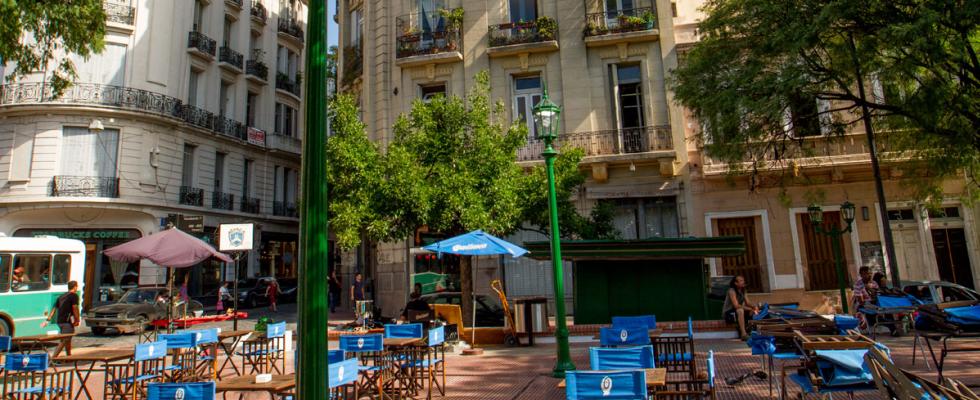
Plaza Dorrego
Old neighbourhood square hosting an antiques fair every Sunday.
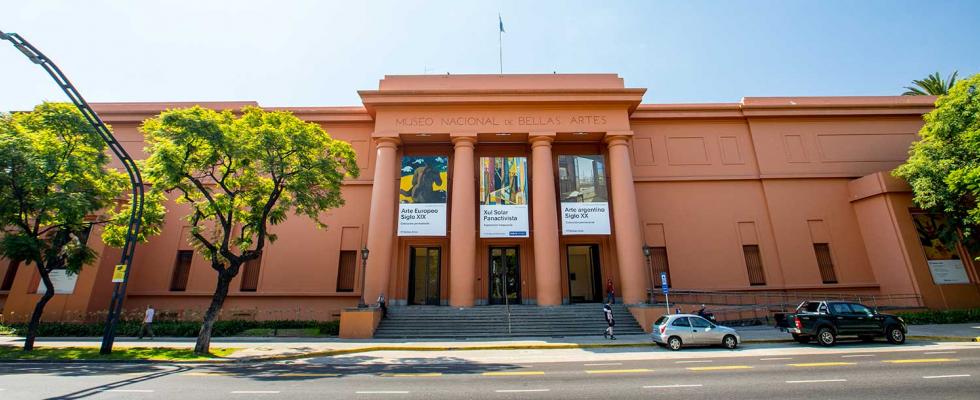
Museo Nacional de Bellas Artes (fine arts museum)
View one of the best art collections in Latin America, including the largest collection of Argentine art around.
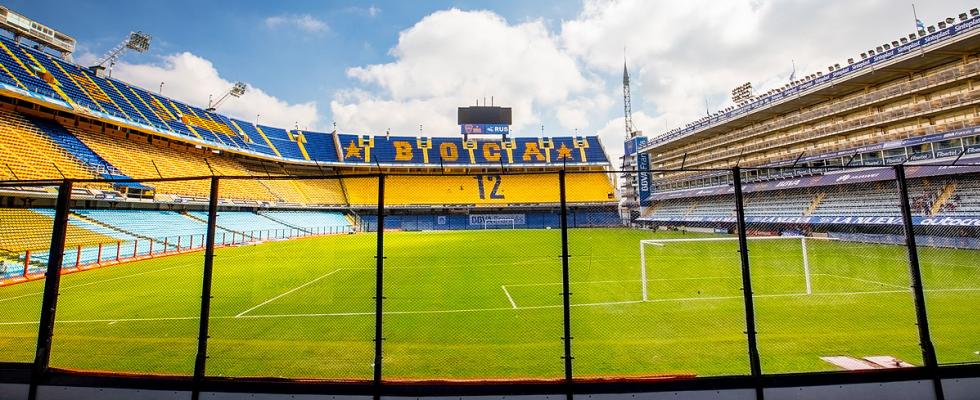
Boca Juniors' "Bombonera" stadium
Visit the legendary stadium La Bombonera, home of Maradona's beloved Boca Juniors.

Palacio Barolo
Discover the curious secrets of this landmark Dante-inspired building.
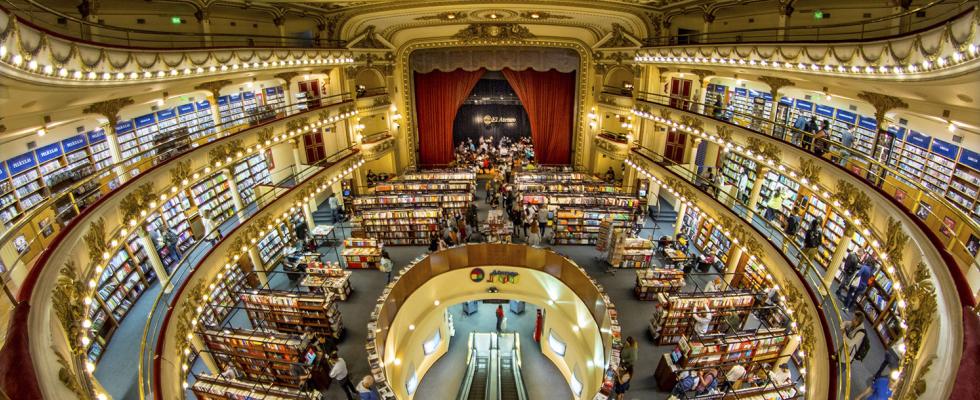
El Ateneo Grand Splendid bookstore
A former theatre, the Grand Splendid is one of the world's most beautiful bookstores.

Zanjón de Granados
Discover underground tunnels and four centuries of history hidden under a 19th century home.
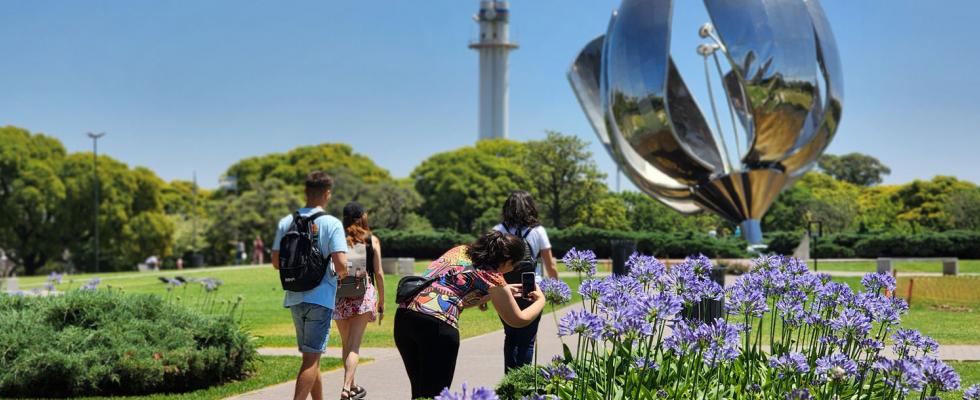
Floralis Genérica
Marvel at this moving sculpture that's become an emblem of the city.
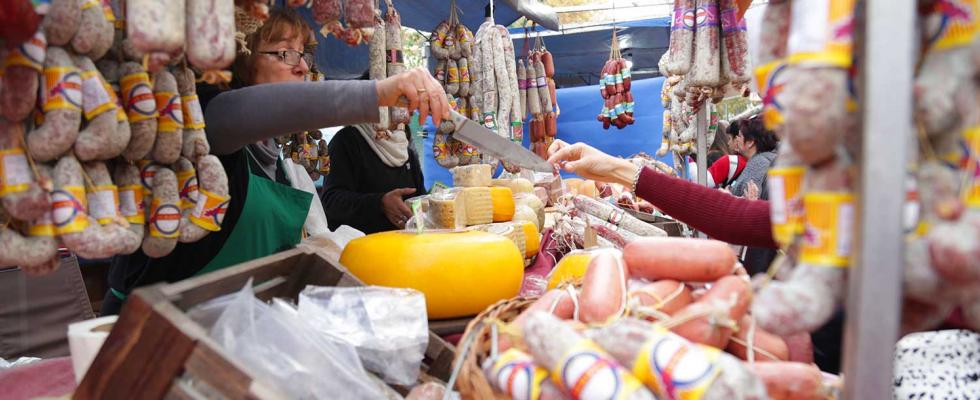
Feria de Mataderos
Discover Argentine traditions at this regular fair that brings the country to the city.

Galerias Pacifico
Gape at this luxurious shopping centre that's a true architectural gem.
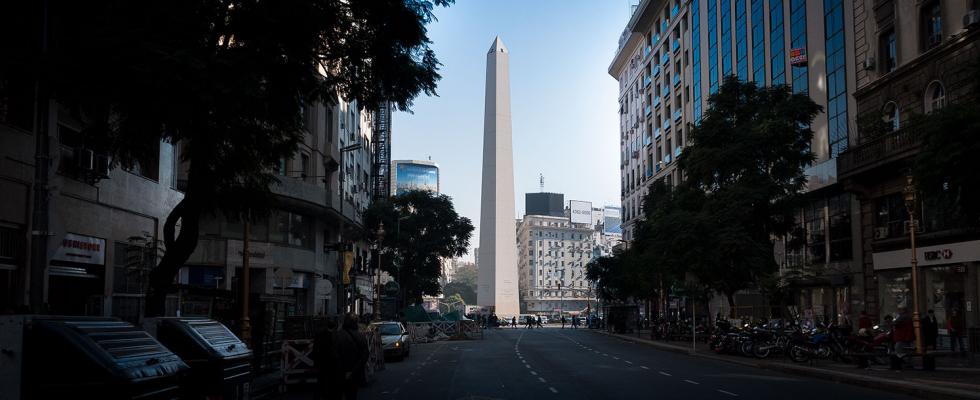
The obelisk
"El Obelisco" is one of the city's most iconic landmarks, built to mark the fourth centenary of the city's first foundation.
HIGHLIGHTS

Tourist Assistance Centers

Travel Buenos Aires Series
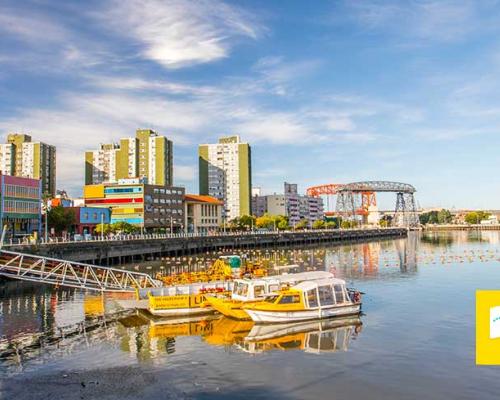
Download our app!
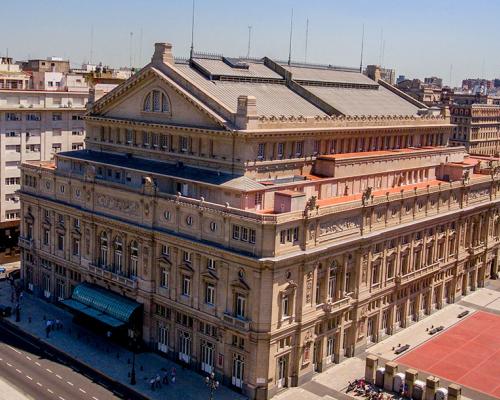
Must-see attractions

IMAGES
VIDEO
COMMENTS
Dominating the Plaza de Mayo, the Casa Rosada - or pink house - is the seat of the Argentine national government and houses the president's office. Scene of much of the city's history, it was from the balconies of the Casa Rosada that Juan and "Evita" Perón addressed the masses during the late 1940s and early 1950s. Visits.
Visitas guiadas a la Casa Rosada. Días y horarios. Sábados, domingos y feriados de 10 a 18 horas. Para realizar la visita guiada, con entrada gratuita, se debe reservar un turno. Por favor elija un día y horario en el siguiente link: visitas.casarosada.gob.ar. Contacto. Correo electrónico: [email protected].
Tours of the Casa Rosada. 50 Balcarce, Mirocentro. Tel: 4344-3802 / 4344-3805. * Editor's Update: Until the last change of administration in Argentina, guests could make free reservations through https://visitas.casarosada.gob.ar/ but the website isn't working. In the meantime, check out some other popular Buenos Aires tours.
Casa Rosada (Pink House) is the Argentine Presidential Palace. No longer used as a residence (the Presidential Residence is located in the suburb of Olivos), the Pink House houses the presidential offices and ceremonial rooms. Evita Peron addressed the crowds from the balcony. Ox blood was mixed with white wash to ceate the distinctive pink color.
Here's everything you need to know before visiting the Casa Rosada. One of the best ways to discover the secrets of the Casa Rosada is by taking a guided tour. Tours are offered in Spanish and English, are free of charge and can be reserved by visiting the website. An experienced guide will take you around the public areas of the presidential ...
The Basics. A photo stop at Casa Rosada should be on every traveler's to-do list, and the famous landmark is included on many Buenos Aires sightseeing tours. Visit as part of a guided city tour, explore the many monuments around Plaza de Mayo on a walking tour, or stop by on a bike tour of Buenos Aires' southern neighborhoods.
Sitio oficial de la Casa Rosada, con noticias e información sobre el Palacio de Gobierno de la Argentina, datos sobre las visitas guiadas y fotos. Toggle navigation ... Guided tours for educational institutions. READ ARTICLE. Latest News. Tuesday, 16 April 2024 145 years since the Campaña del Desierto
The Casa Rosada Museum is open from Wednesdays to Sundays and on holidays, from 10.00 am to 6.00 pm (last admission at 5.30 pm). Authorities. President of the Nation. Javier Milei. Secretary General. Karina Milei. Director of Cultural Programmes and Museum Casa Rosada. Virginia Fernanda González. Telephone (011) 4344-3600.
Free hour-long guided tours are given on weekends and must be booked online in advance; bring ID. The building occupies the site where colonial riverbank fortifications once stood; today, however, after repeated landfills, the palace stands more than 1km inland. The interesting Museo Casa Rosada is located behind the palace.
The duration of the private city tour is 4 hours, and the maximum number of passengers is 15. View Tour. 1. 2. Choose from 22 operators that offer tours & tickets for Casa rosada and get the best price. Book it today from as low as 20 USD on YonderTours.
You can still see the remains of the old brick walls. The museum covers 200 years of Argentine history, from the revolution of independence of May 1810 until today. It also contains artistic exhibits, including Mexican artist David Alfaro Siqueiros' acclaimed "Ejercicio Plástico". Discover more than 200 years of history.
Casa Rosada Tours and Tickets. 4,636 reviews. Free admission. The striking salmon-pink façade of Argentina's presidential palace—the Casa Rosada (Pink House)—is one of the capital's most iconic sights, presiding over the historic Plaza de Mayo square. Home of the Argentine President and government offices since 1862, it's been the ...
Visit to the. Casa Rosada. We toured around the rooms and hallways of the magnificent Pink House. At the time officials do not work, the Casa Rosada (the "Government House") is open to public tours. The Grenadiers do not guard the entrance any longer; they work as tourist guides instead. On a sunny Sunday morning, once we got through the ...
Dominating the Plaza de Mayo, the Casa Rosada - or pink house - is the seat of the Argentine national government and houses the president's office. Witness to much of the city's history, it was from the balconies of the Casa Rosada that Juan and "Evita" Perón addressed the masses during the late 1940s and early 1950s. The Casa Rosada was ...
The best Casa Rosada, Buenos Aires Tours are: Buenos Aires: City Highlights Guided Tour with Transfer; Buenos Aires: Hop-On Hop-Off Bus & Audio Guide + City Pass; Buenos Aires: North or South Buenos Aires Bike Tour; Buenos Aires: Full Day Bike Tour with Lunch; Buenos Aires: Full-Day Walking Tour
The last part of our tour will be at the Plaza de Mayo, where Buenos Aires was definitively founded back in 1580. See the Old Cabildo (city hall), Metropolitan Cathedral (the former home for Pope Francis) and the Casa Rosada (the presidential offices). North Circuit If you prefer the North Circuit, you will see the heart of Buenos Aires' late ...
Our most recommended Casa Rosada, Buenos Aires Guided tours. 1. Highlights of Buenos Aires: Small Group 3-Hour Guided Tour. On this 3-hour tour, you'll have the opportunity to see the main site of Buenos Aires. Begin at the Plaza de Mayo or May Square, the site of the most important historical events since the city's founding.
The Casa Rosada at the eastern extreme of the Plaza de Mayo is the seat of the country's government, where the President and her staff work. On weekends, you can tour the building for free. Unlike America's White House, the President doesn't live inside the Casa Rosada. But very much like America's Jennifer Lopez, the building is most ...
Casa Rosada Tours and Tickets - page 4. 3,490 reviews. Free admission. The striking salmon-pink façade of Argentina's presidential palace—the Casa Rosada (Pink House)—is one of the capital's most iconic sights, presiding over the historic Plaza de Mayo square. Home of the Argentine President and government offices since 1862, it's ...
The Casa Rosada (Spanish pronunciation: [ˈkasa roˈsaða]), literally the Pink House, is the president of the Argentine Republic's official workplace, located in Buenos Aires.The palatial mansion is known officially as Casa de Gobierno ("House of Government" or "Government House"). Normally, the president lives at the Quinta de Olivos, the president of Argentina's official residence, located ...
The Casa Rosada, also called the Pink House, is a historical and iconic landmark in Buenos Aires. It serves as the seat of the Argentine national government and is a symbol of Argentine politics. The Casa Rosada offers free guided tours in English and Spanish, allowing visitors to explore its rich history. The iconic pink color of the building ...
These Casa Rosada, Buenos Aires Solo travelers' tours are taking additional COVID-19 precautions: Highlights of Buenos Aires: Small Group 3-Hour Guided Tour Buenos Aires: Half-Day Sightseeing Tour with 2 Stops
Must-see attractions. The places you really can't miss on a visit to Buenos Aires. Teatro Colón. Don't miss one of the world's most majestic opera houses, acclaimed for its architecture and acoustics. See more . Casa Rosada. Visit Buenos Aires' iconic pink governmental palace.